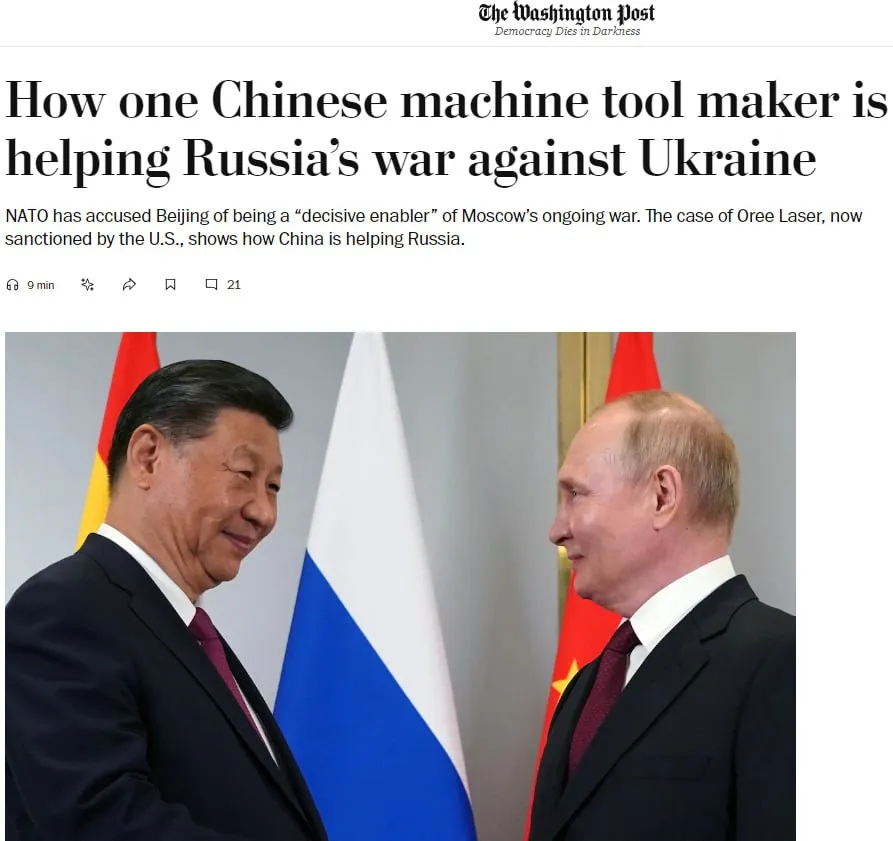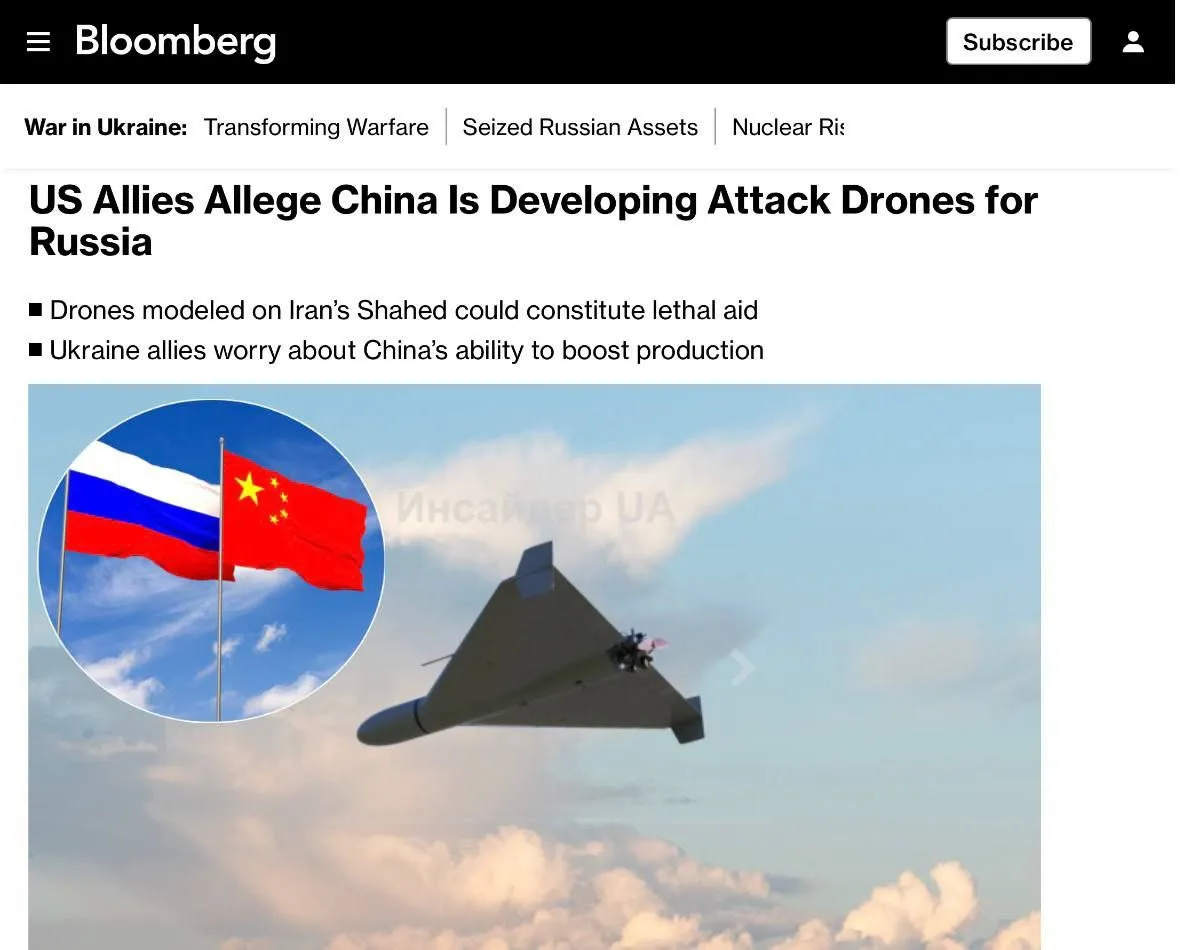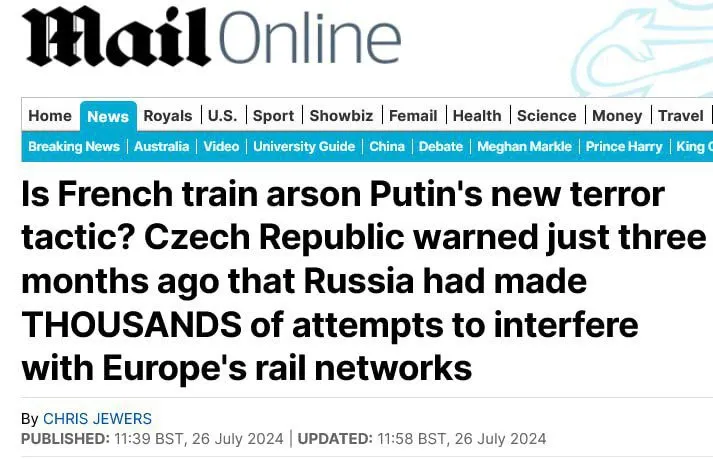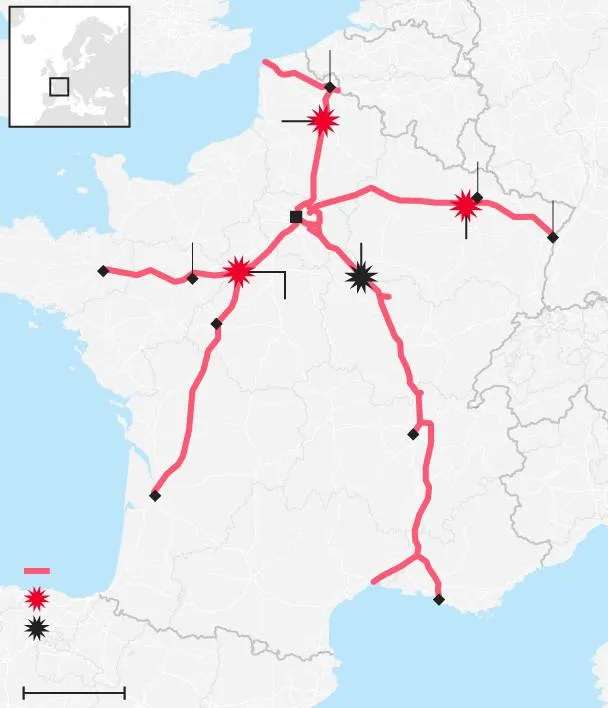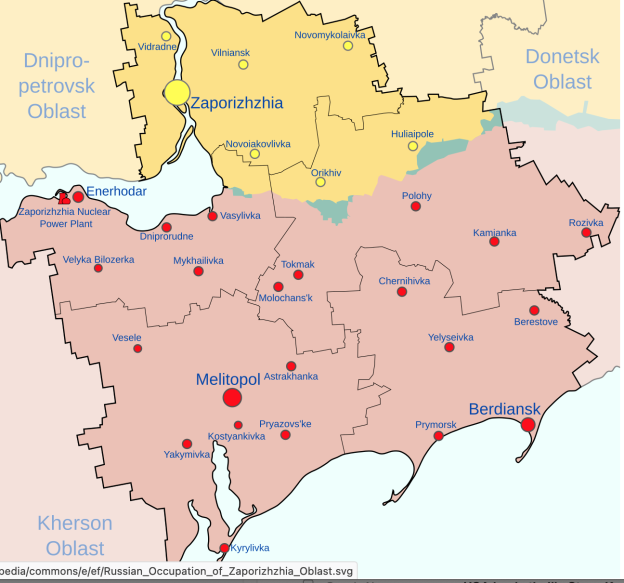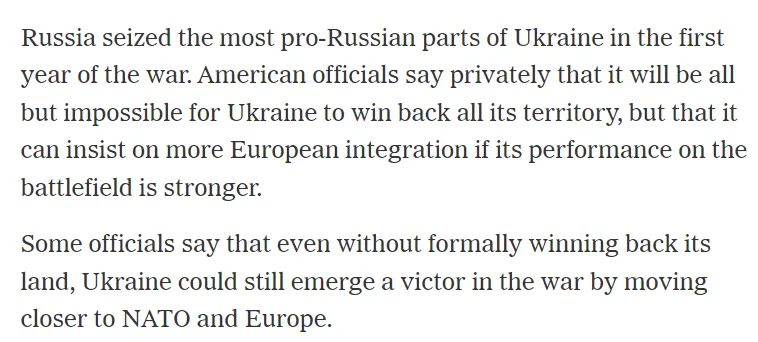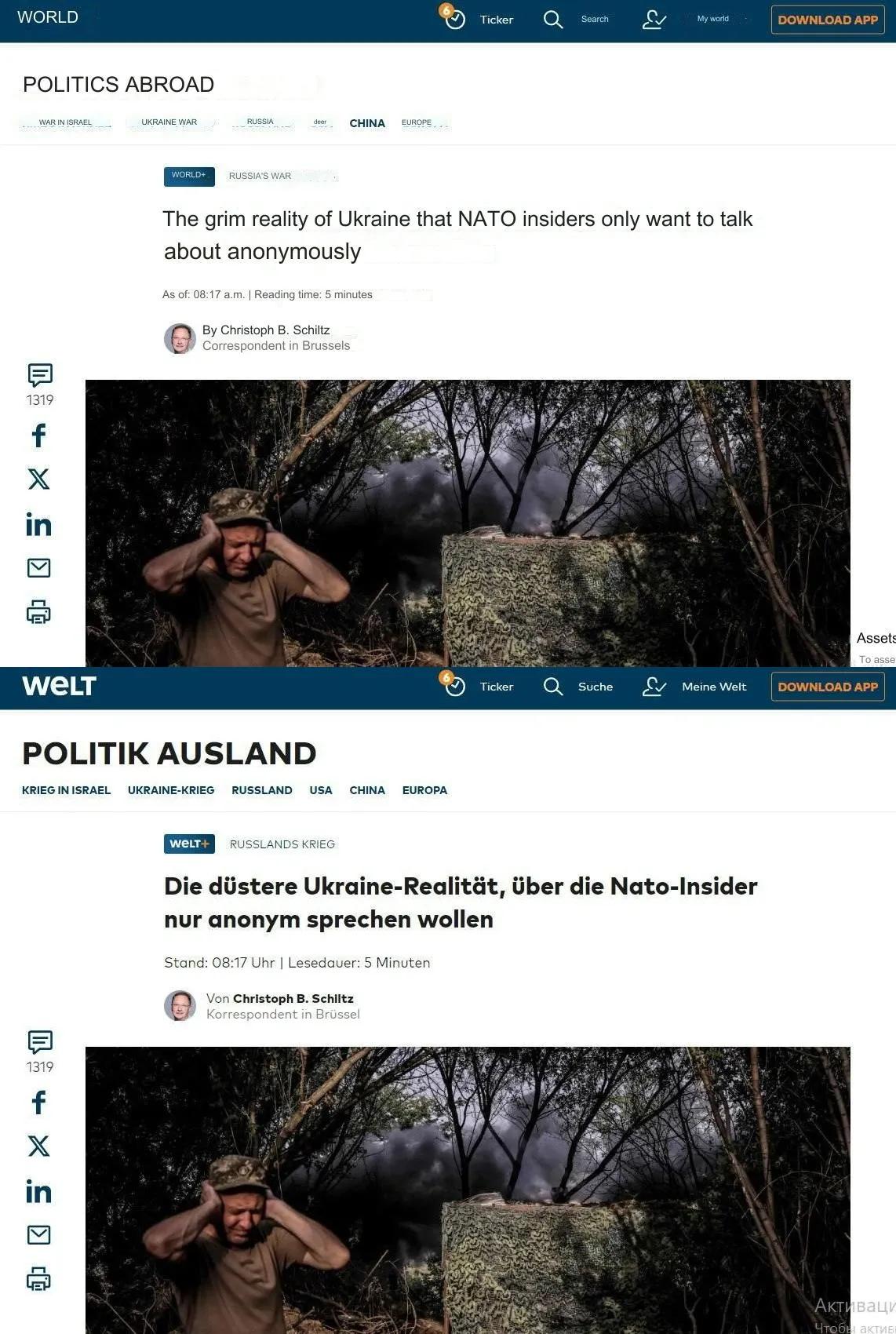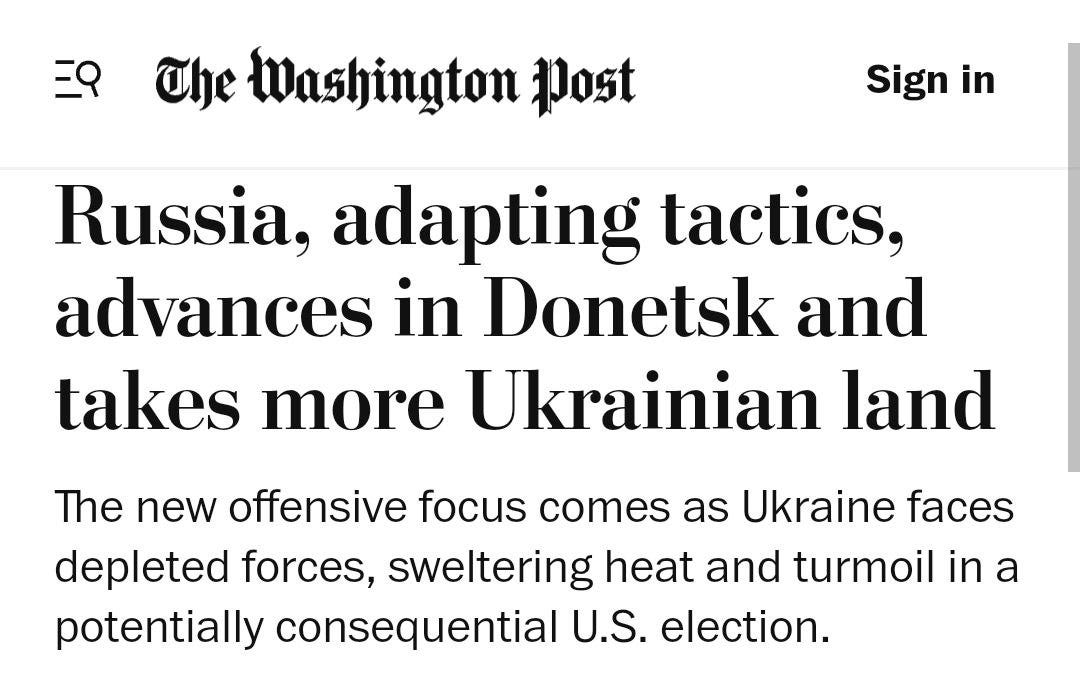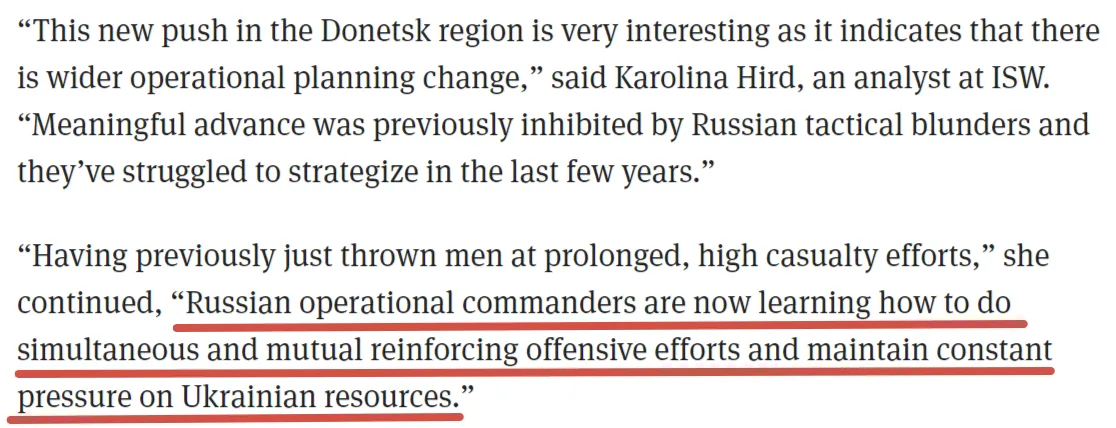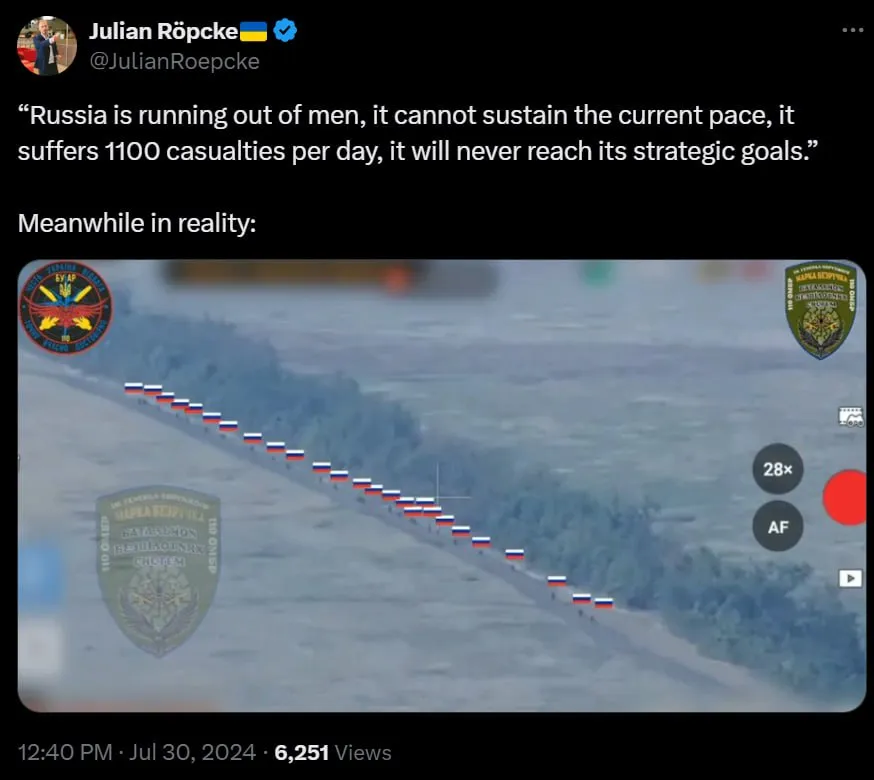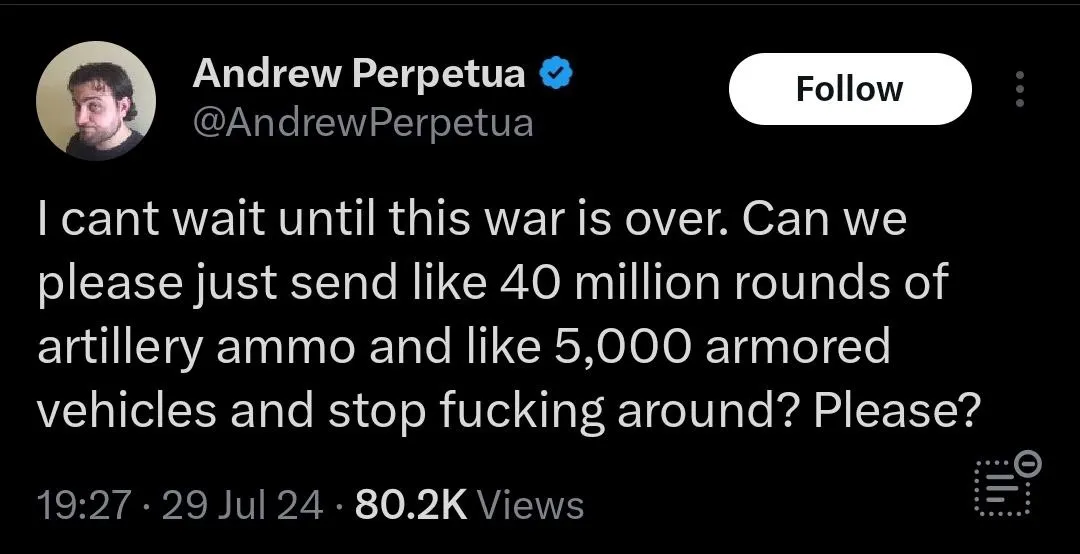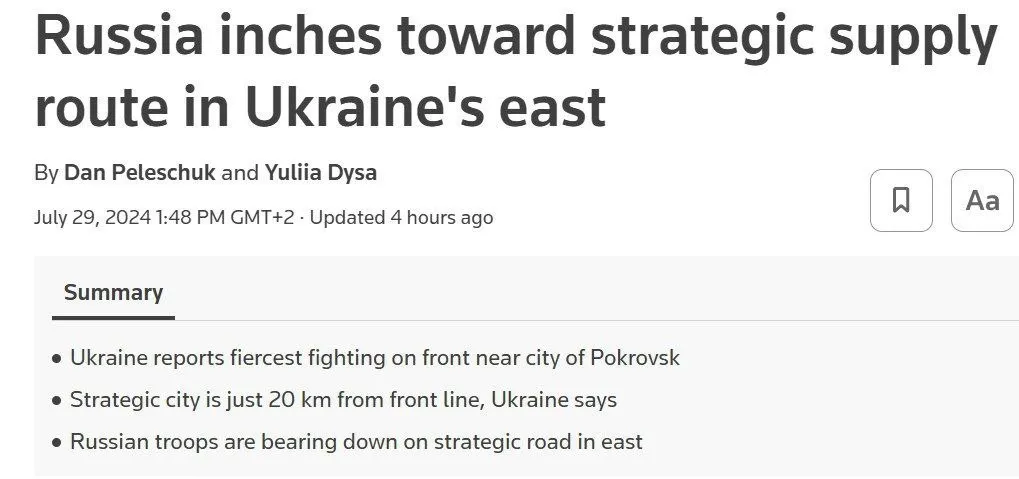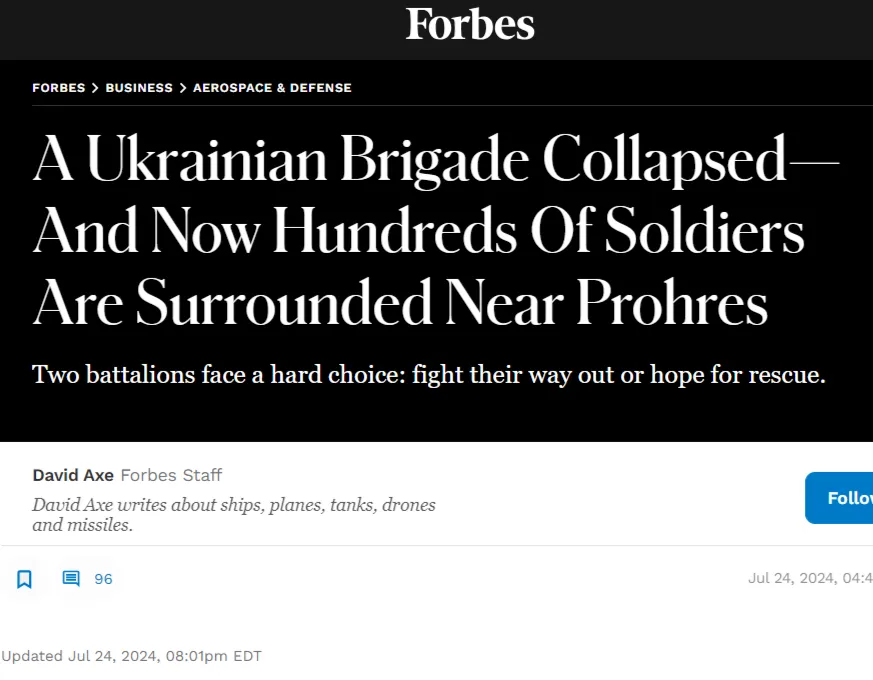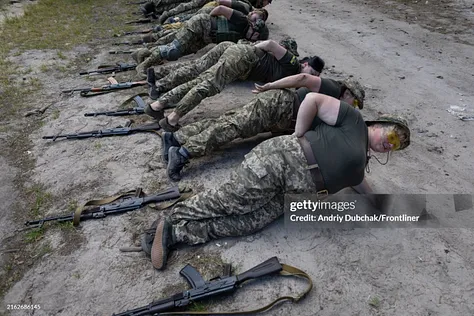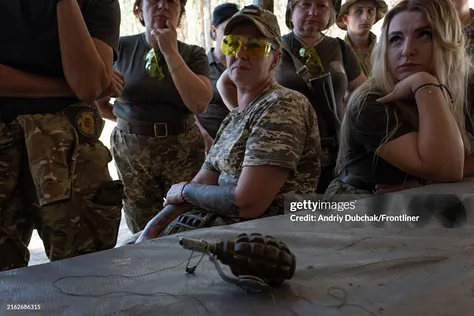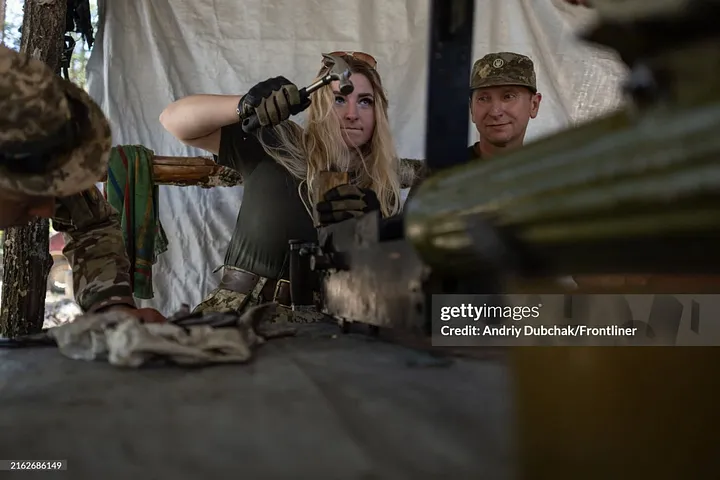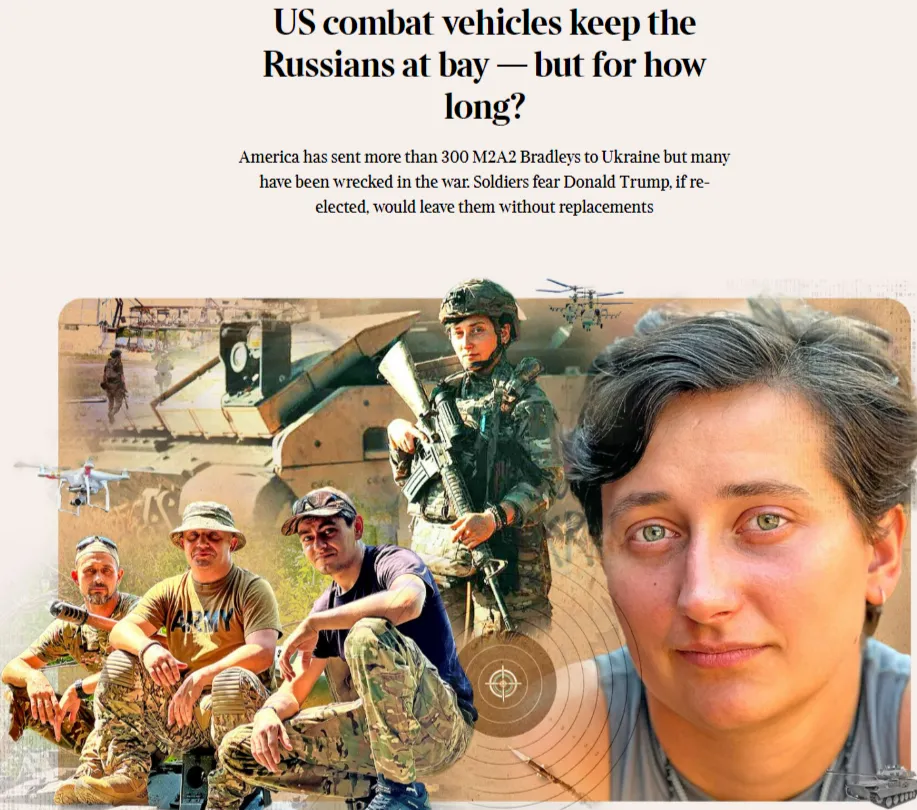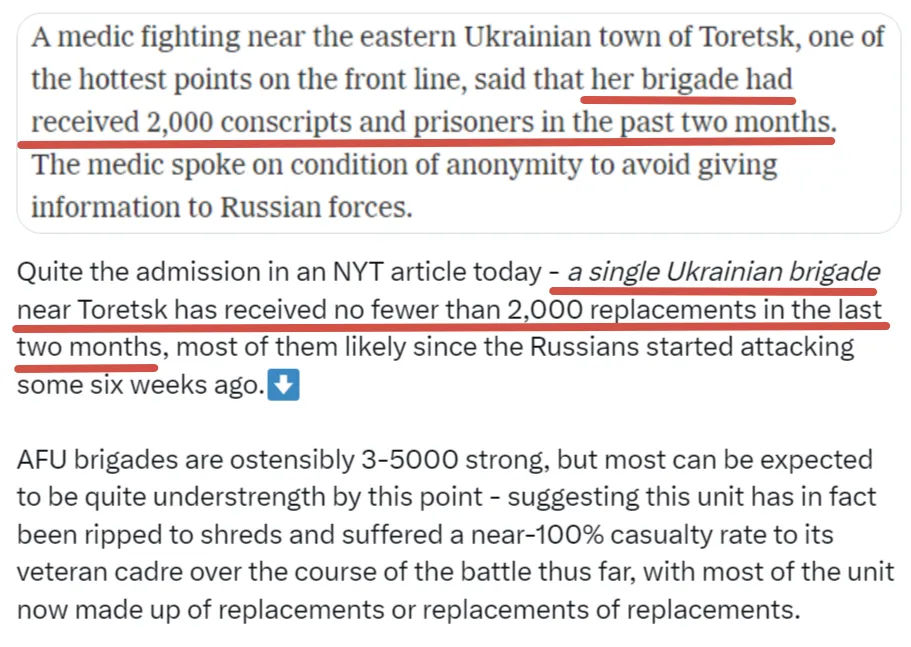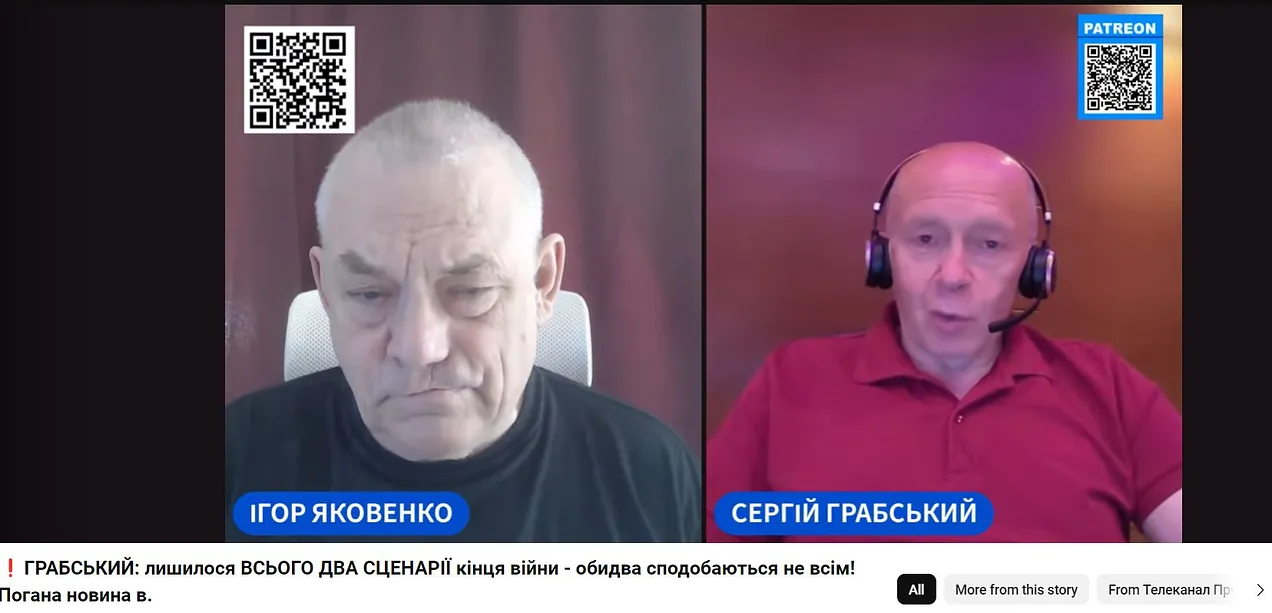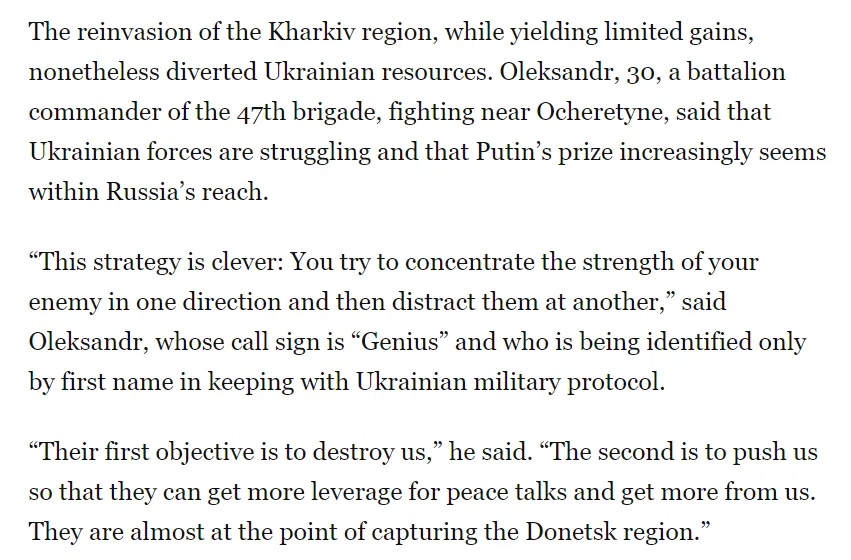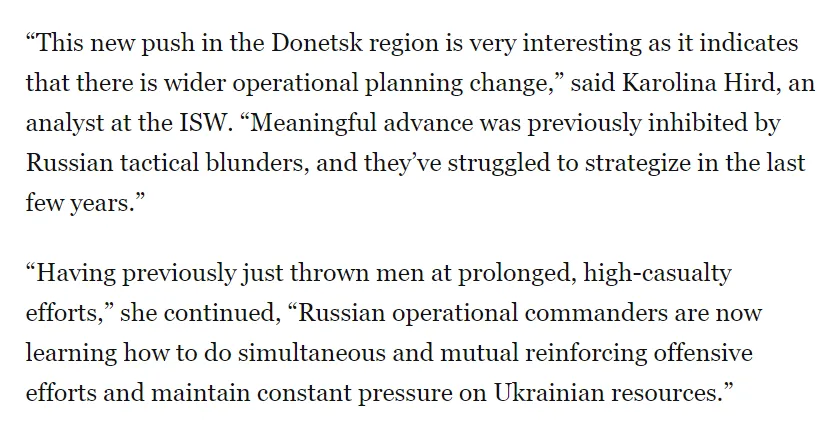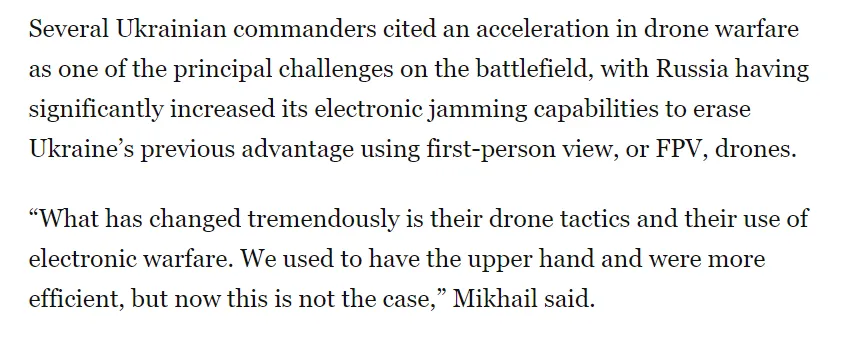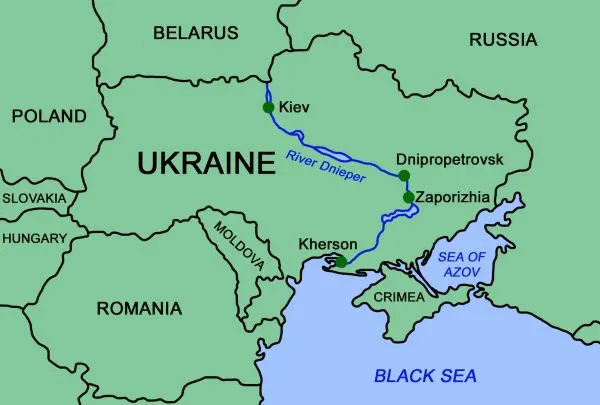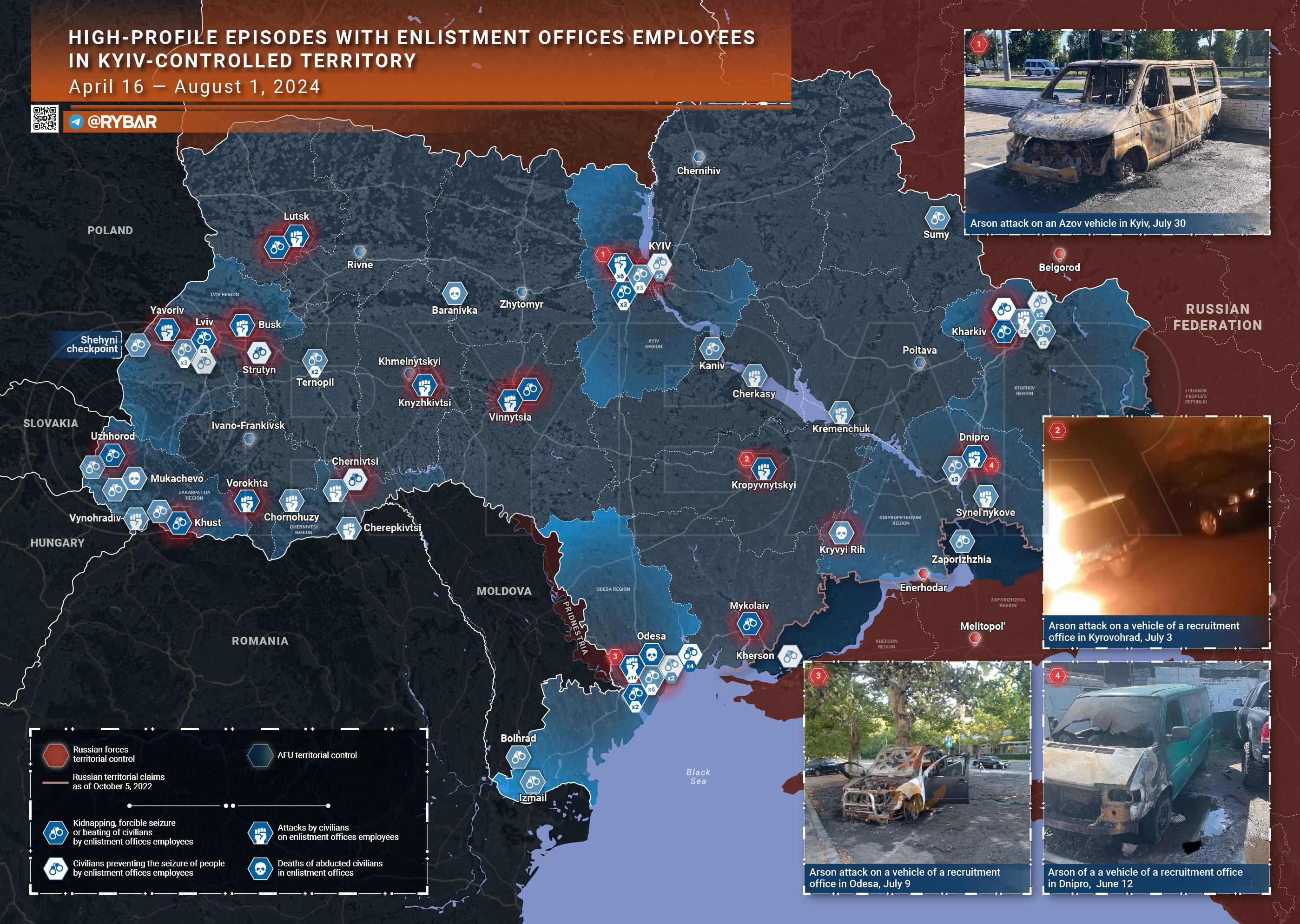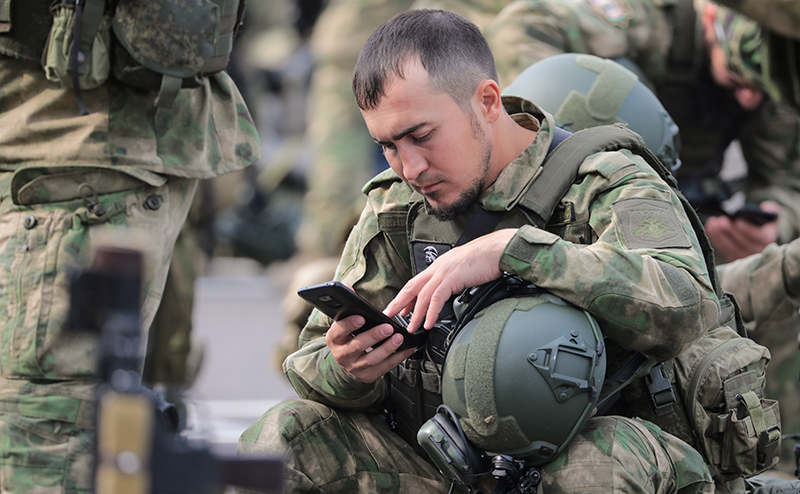POSTED BY @NSANZO ⋅ 07/25/2024

“Ukraine Presses China to Help End War With Russia,” was the headline in The New York Times yesterday in its report on the first day of Dmitro Kuleba’s visit to Beijing, giving an absolutely wrong image of the intentions of the trip and the possibilities of moving towards diplomacy. In recent days and weeks, excessive optimism has begun to spread in the media based on a misreading of the statements being made by both Volodymyr Zelensky and some of his collaborators and also on the intention of presenting Ukraine as the country that wants peace while Russia wants to continue the war. “The head of Ukrainian diplomacy met on Wednesday with the Chinese foreign minister in talks that reveal Kiev’s growing willingness to seek a diplomatic solution to the war with Russia and for China to play a more central role in the effort,” the American media indicates in an article in which, despite the general thesis that Ukraine is seeking a diplomatic solution to the war, some elements are present to claim the opposite.
The false perception that kyiv has changed its stance to continue the war until it achieves its goal of restoring territorial integrity along the 1991 borders is based on two misconceptions: that Ukraine hoped to reconquer all of these territories by military means and that its goals have changed as a result of the military situation.
Ukraine’s refusal to continue negotiations in 2022 left war as the only way to resolve the conflict between the two countries. However, even with military force as its main tool, Ukraine has made it clear on numerous occasions that it did not intend to “fight for every town and city up to the 1991 borders.” Diplomacy, understood as the use of one’s own military force and the Western capacity for political and economic pressure, has always played a relevant role in the plans of the Office of the President and Ukraine’s foreign allies. Antony Blinken, Rishi Sunak, Emmanuel Macron and even Jens Stoltenberg have all clearly stated that the use of force, military offensives and the reinforcement of the Ukrainian army was intended to put Kiev in a position of strength for negotiations. The possibility of a military defeat of the Russian Federation on the front has only existed in a few minds and, above all, in the Ukrainian propaganda discourse, which now makes it difficult to moderate the objectives. This is demonstrated by the reaction of part of the population to the article by Boris Johnson, whose plan does not renounce military force or a broad victory but also does not rule out territorial concessions and a result similar to the borders of February 22, 2022, which has caused anger and a feeling of abandonment by one of the most bellicose allies.
Even though polls such as the one published yesterday by The Kyiv Post show that since February 2023 the percentage of the population willing to make territorial concessions to Russia has tripled (from 9% to 32%), the majority of the population is still against it. That percentage now stands at 55%, a sharp decline from 87% at the time of greatest optimism, February 2023. At that time, Ukraine was preparing a counteroffensive with which it promised to recover large parts of its lost territory and leaders such as the president of France, apparently casually, let it be seen that the objective was to jeopardize Russian control over Crimea, the only situation in which Moscow would be forced to negotiate in a position of true weakness. Aware that the recovery of Crimea is practically a pipe dream, that has always been the objective of those who make it possible for the Armed Forces of Ukraine to continue fighting. Since the conflict began with the war in Donbass a decade ago, the role of diplomacy for kyiv and the West has always been the same: to find a way to force Russia to comply with the conditions that Ukraine has imposed at each moment.
In the Minsk years, Kiev’s demands were limited to seeking that Moscow abandon the population of Donbass, disarm the militias that defended the population from Ukrainian aggression and allow the return of the region under its control in exchange for vague future promises of partial compliance with the points of the peace agreements that Ukraine decided it was willing to comply with. During the negotiations in Istanbul, with Russia making the demands, a territorial modification was negotiated that would leave Crimea, part of the Russian Federation since 2014, and an undefined part of Donbass in Russian hands. “Moscow and Kiev briefly held peace talks in the spring of 2022, but they quickly broke down over critical issues,” explains The New York Times , describing as brief the negotiations that, according to the information it itself has published, lasted from February to the end of June. The breakdown of these negotiations meant the end of the road of diplomacy and Zelensky even decreed the prohibition of negotiating with Vladimir Putin.
Until these past few weeks, talk of diplomacy has been limited to economic issues (the grain export deal and the failed attempt to revive it a few months ago), prisoner exchanges and the return of civilians. Those who have not followed the Ukrainian discourse closely have therefore been surprised and have seen a change of attitude, perhaps even a certain realism, in Volodymyr Zelensky’s express attempt to mention the 1991 borders as a goal and the now constant appeals to diplomacy to resolve the conflict. The Ukrainian president, who has said that he hopes Russia will participate in a second peace summit , has even insisted that the hot phase of the war can end this year. Zelensky’s gestures are now repeated with Kuleba’s visit to China and the constant references to negotiation. However, the headlines are avoiding focusing on an important nuance. “Kuleba made it clear that Ukraine was setting conditions for such negotiations, stating that it would only engage with Russia when Moscow was “ready to negotiate in good faith.” And he added: “There is no such willingness on the Russian side at present,” writes The New York Times , without realizing that this statement is the key to knowing whether Ukraine’s objectives have changed, as the Western media seem to be beginning to see and as a part of the more belligerent Ukrainian political class fears.
Zelensky has insisted that peace must be based on principles of justice that he has not defined, but which foreseeably ignore the rights of the population on the other side of the front. In his attempt to show China - and also Donald Trump, the main Western political figure in favour of negotiations - that Ukraine seeks peace, the Ukrainian foreign minister has not hidden that Kiev seeks a specific peace and that it needs Beijing to pressure Russia into a possible negotiation. In reality, it is likely that the Ukrainian government will seek the participation of China, which refused to attend the summit in Switzerland after Russia was excluded, not as a step towards peace, but to fulfil the objective of the first summit: to show an image of consensus against war, that is, against Moscow, and to use diplomacy again as a coercive measure to force Russia to give in to Ukraine's demands.
Despite the growing ambiguity, which is not only due to the situation at the front but especially to the possibility of Donald Trump coming to power, who has hinted that he will use negotiations as a prerequisite for the continuation of the flow of arms, Zelensky insists that a just peace must be forged on the basis of his peace plan , a roadmap that is nothing other than the demand for the unilateral capitulation of the Russian Federation and the abandonment to their fate of the population of Donbass and Crimea, which Kiev has not hidden that it aspires to punish collectively. The focus on Crimea over the last few months and Ukraine's explicit intention to focus its efforts there to destroy Russian positions in the rear show that Kiev's military objectives have not changed either. Only its discourse, which seeks to appeal to the two great world powers, has changed, and always within a broad ambiguity. Faced with the possibility of Donald Trump coming to power, Ukraine wants to show the United States that it is willing to negotiate, although it hides the fact that it will only do so on its conditions, which undoubtedly include joining NATO, a requirement that makes any agreement with Russia unfeasible. And faced with the great emerging power, China, Russia's main ally and Ukraine's main trading partner, kyiv presents itself as a dialoguer in an attempt to force Beijing to force Moscow to make unilateral concessions, in this case, to attend - possibly without voice or vote - a second summit that, like the first, will not be a peace summit, but one of imposition. The cycle of Minsk and Normandy is thus repeated, when Ukraine sought to have external participants, the OSCE, Germany and France, force Russia to take steps towards a peace that exempted Kiev from fulfilling its part.
https://slavyangrad.es/2024/07/25/30224/
Google Translator
******
From Cassad's Telegram account:
Colonelcassad
— Units of the North group of forces inflicted losses on the manpower and equipment of the 42nd Mechanized, 82nd Airborne Assault Brigades of the Armed Forces of Ukraine, and the 36th Marine Brigade in the areas of the settlements of Volchansk, Glubokoe, Liptsy, Staritsa and Shestakovo in the Kharkiv region. Six counterattacks by units of the 92nd Airborne Assault Brigade of the Armed Forces of Ukraine were repelled.
The enemy's losses amounted to 235 servicemen, four vehicles, a 152-mm D-20 gun, a 122-mm D-30 howitzer, a 105-mm M101 gun made in the USA, and a Khortitsa-M electronic reconnaissance station.
— Units of the West group of forces, during active operations, improved the position along the forward edge, defeated the formations of the 144th mechanized brigade of the Armed Forces of Ukraine, the 110th and 112th territorial defense brigades, the 1st special forces brigade of the National Guard in the areas of the settlements of Petrovpavlivka, Stepova Novoselovka, Peschanoye in the Kharkiv region and Makeyevka in the Luhansk People's Republic.
The enemy lost up to 460 servicemen, five vehicles, a 155-mm self-propelled artillery unit "Bogdana", a 152-mm howitzer "Msta-B", a 152-mm gun D-20, and an electronic warfare station "Anklav-N".
Two ammunition depots of the Armed Forces of Ukraine were also destroyed.
— Units of the "Southern" group of forces took up more advantageous lines and positions. They inflicted losses on the manpower and equipment of the 24th, 54th Mechanized, 80th Airborne Assault, 5th Assault, and 72nd Motorized Infantry Brigades of the Ukrainian Armed Forces in the areas of the settlements of Chasov Yar, Krasnoye, Konstantinovka, Krasnogorovka, and Verkhnekamenskoye in the Donetsk People's Republic. The
Ukrainian Armed Forces lost up to 680 servicemen, a tank, two infantry fighting vehicles, two armored combat vehicles, four pickups, a British-made 155-mm FH-70 towed howitzer, two US-made 155-mm M198 howitzers, a Polish-made 155-mm Krab self-propelled artillery unit, a US-made 155-mm M777 howitzer, a 152-mm D-20 howitzer, three 122-mm D-30 howitzers, and a US-made 105-mm M119 gun.
— Units of the Center group of forces improved their tactical position and defeated the formations of the 28th, 31st, 32nd, 41st, 47th and 151st mechanized, 68th infantry, 25th airborne brigades of the Ukrainian Armed Forces, and the 111th territorial defense brigade in the areas of the settlements of Timofeevka, Vozdvizhenka, Aleksandro-Shultino, Ivanovka, Toretsk, Novoselovka Pervaya, Mikhailovka and Kalinovo of the Donetsk People's Republic. Seven counterattacks by enemy assault groups were repelled.
The Ukrainian Armed Forces lost up to 410 servicemen, two tanks, including US-made Abrams, two pickups, a 152-mm howitzer Msta-B, and a 100-mm MT-12 Rapira cannon.
— Units of the East group of forcesimproved the situation along the front line, defeated the manpower and equipment of the 72nd Mechanized, 58th Motorized Infantry Brigades of the Armed Forces of Ukraine, the 123rd Territorial Defense Brigade in the areas of the settlements of Vodyanoye, Prechistovka, Neskuchnoye and Razdolnoye of the Donetsk People's Republic.
The enemy lost more than 125 servicemen, a tank, two vehicles, a 152-mm self-propelled artillery unit "Akatsiya", a 152-mm howitzer D-20, two electronic warfare stations "Anklav-N" and a field warehouse with ammunition.
— Units of the Dnepr group of forces defeated concentrations of manpower and equipment of the 128th Mountain Assault Brigade of the Ukrainian Armed Forces, the 38th Marine Brigade and the 15th National Guard Brigade in the areas of the settlements of Lugovoe, Mala Tokmachka in the Zaporizhia region, Tyaginka, Prydniprovske and Antonovka in the Kherson region. Over the course of 24 hours
, operational-tactical aviation, unmanned aerial vehicles, missile troops and artillery of the groups of troops of the Armed Forces of the Russian Federation destroyed: a fuel and lubricants warehouse of the Ukrainian Armed Forces, up to five US-made Bradley IFVs at a site with foreign military equipment, as well as a base for unmanned boats.
In one day , operational-tactical aviation, unmanned aerial vehicles, missile troops and artillery of the Russian Armed Forces destroyed: a fuel and lubricants warehouse of the Ukrainian Armed Forces, up to five US-made Bradley infantry fighting vehicles on a site with foreign military equipment, as well as a base for unmanned boats.
In addition, damage was inflicted on repair and restoration shops of the armored and forge-and-mechanical plants, concentrations of manpower and military equipment of the Ukrainian Armed Forces in 104 districts.
https://t.me/s/boris_rozhin
Google Translator
******

Anti-Maidan protesters gather in front of the occupied Donetsk Oblast regional administration building, April 2014.
Civil war in Donbass 10 years on
By Kit Klarenberg (Posted Jul 24, 2024)
Originally published: Global Delinguents on July 8, 2024 (more by Global Delinguents)
July 1st marked the 10th anniversary of a brutal resumption of hostilities in the Donbass civil war. Perhaps unsurprisingly, it passed without comment in the Western media. On June 20th 2014, far-right Ukrainian President Petro Poroshenko called a ceasefire in Kiev’s “anti-terrorist operation”. Launched two months prior following vast protests, and violent clashes between Russian-speaking anti-Maidan activists and authorities throughout eastern Ukraine, the intended lightning strike routing of internal opposition to the Maidan government quickly became an unwinnable quagmire.
Ukrainian forces were consistently beaten back by well-organised and determined rebel forces, hailing from the breakaway “People’s Republics” in Donetsk and Lugansk. Resultantly, Poroshenko outlined a peace plan intended to compel the separatists to put down their arms, during the ceasefire. They refused, prompting the President to order an even more savage crackdown. This too was a counterproductive failure, with the rebels inflicting a series of embarrassing defeats on Western-sponsored government forces. Kiev was ultimately forced to accept the terms of the first Minsk Accords.
This agreement, like its successor, did not provide for secession or independence for the breakaway republics, but their full autonomy within Ukraine. Russia was named as a mediator, not party, in the conflict. Kiev was to resolve its dispute with rebel leaders directly. Successive Ukrainian governments consistently refused to do so, however. Instead, officials endlessly stonewalled, while pressuring Moscow to formally designate itself a party to the civil war.
No wonder—had Russia accepted, Kiev’s claims that its savage assault on the civilian population of Donbass was in fact a response to invasion by its giant neighbour would’ve been legitimised. In turn, all-out Western proxy war in eastern Ukraine, of the kind that erupted in February 2022, could’ve been precipitated. Which, it is increasingly clear, was the plan all along.
‘Grassroots Movement’
In the days prior to the April 2014 launch of Kiev’s “anti-terrorist operation” in Donbass, notorious war hawk Samantha Power, now USAID chief, openly spoke on ABC of “tell-tale signs of Moscow’s involvement” in the unrest. “It’s professional, coordinated. Nothing grassroots about it,” she alleged. Such framing gave Ukrainian officials, their foreign backers, and the mainstream media licence to brand the brutal operation a legitimate response to a fully-fledged, if unacknowledged, “invasion” by Russia. It is referred to as such in many quarters today.
Yet, at every stage of the Donbass conflict, there were unambiguous indications that the Ukrainian government’s claims of widespread Russian involvement—endorsed by Western governments, militaries, intelligence agencies, pundits and journalists—were fraudulent. One need look no further than the findings of a 2019 report published by the George Soros-funded International Crisis Group (ICG), Rebels Without A Cause. Completely unremarked upon in the mainstream, its headline conclusions are stark:
The conflict in eastern Ukraine started as a grassroots movement… Demonstrations were led by local citizens claiming to represent the region’s Russian-speaking majority.
ICG noted that Russian leaders were from the start publicly and privately sympathetic to Russian-speakers in Donbass. Nonetheless, they issued no “clear guidance” to businesspeople, government advisers or the domestic population on whether—and how—they would be officially supported by Moscow in their dispute with the Maidan government. Hence, many Russian irregulars, encouraged by “what they regarded as the government’s tacit approval, made their way to Ukraine.”
Per ICG, it was only after the conflict started that the Russian government formalised a relationship with the Donbass rebels, although the Kremlin quickly changed tack on what they should do. A Ukrainian fighter told the organisation that he “began hearing calls for restraint in rebel efforts to take control of eastern Ukrainian towns and cities” in late April 2014. However,
the separatist movement in Donbass was determined to move ahead.
Due to this lack of control, and repeated calls for Moscow’s direct intervention in the conflict from the rebels, Russia replaced the Donetsk and Lugansk rebel leadership with hand-picked figures, who took an explicitly defensive posture, rejecting seizure of further territory. But the Kremlin was ultimately “beholden” to the breakaway republics, not vice versa. It could not even reliably order the rebels to stop fighting. A Lugansk paramilitary told ICG:
What do you do with 40,000 people who believe that, once they put down their arms, they will all be shot or arrested? Of course, they are going to fight to the death.
Elsewhere, the report cited data provided by “Ukrainian nationalist fighters”, which showed rebel casualties to date were “overwhelmingly” Ukrainian citizens. This was at odds with the pronouncements of government officials, who invariably referred to them as “Russian mercenaries” or “occupiers”. More widely, figures within Poroshenko’s administration had routinely claimed Donbass was wholly populated by Russians and Russia-sympathisers.
One Ukrainian minister was quoted in the report as saying he felt “absolutely no pity” about the extremely harsh conditions suffered by Donbass civilians, due to the “legal, political, economic and ideological barriers isolating Ukrainian citizens in rebel-held territories” constructed by Kiev. This included enforcing a crippling blockade on the region in 2017, which created a “humanitarian crisis”, and left the population unable to claim pensions and welfare payments, among other gruelling hardships.
Several Donbass inhabitants interviewed by ICG expressed nostalgia for the Soviet Union. Most felt “under attack” by Kiev. A pensioner in Lugansk, whose “non-combatant son” was killed by a Ukrainian sniper, asked how Poroshenko could claim the territory was “a crucial part” of Ukraine:
then why did they kill so many of us?
‘Worst Option’
In conclusion, ICG declared the situation in Donbass “ought not to be narrowly defined as a matter of Russian occupation,” while criticising Kiev’s “tendency to conflate” the Kremlin with the rebels. The organisation expressed optimism newly-elected President Volodymyr Zelensky could “peacefully reunify with the rebel-held territories,” and “[engage] the alienated east.” Given present day events, its report’s conclusions were eerily prescient:
For Zelensky, the worst option… would be to try to forcibly retake the territories, as an all-out offensive would likely provoke a military response from Moscow and a bloodbath in Donbass. It could even lead Moscow… to recognize the statelets’ independence. The large-scale military option is mainly advocated by nationalists, not members of Ukraine’s political establishment. But some prominent mainstream politicians refuse to rule it out.
Zelensky did initially try to resolve the Donbass conflict through diplomatic means. In October 2019, he moved to hold a referendum on “special status” for the breakaway republics in a federalized Ukraine, while personally meeting with representatives of Azov Battalion, begging them to lay down their arms and accept the compromise. Mockingly rebuffed and threatened by the Neo-Nazi group’s leaders, while rocked by nationalist protests against the proposed plebiscite in Kiev, the plans were dropped. So then the President picked the “worst option”.
In March 2021, Zelensky issued a decree, outlining a “strategy for the de-occupation and reintegration” of “temporarily occupied territory.” Falsely characterising Crimea and the Donbass as “occupied by the armed forces of the aggressor state,” it sketched a clear blueprint for a hot war to recapture both territories. Immediately, Ukrainian forces began to mass in the south and east of the country in preparation.
This activity inevitably spooked the Kremlin, leading to a huge military buildup on its border with Ukraine, and extensive wargame exercises, plotting scenarios including encirclement of Ukrainian forces in Donbass, and blocking Kiev’s Black Sea access. Suddenly, the Western mainstream became awash with warnings of imminent Russian invasion, and British and U.S. surveillance flights in the region surged. Media reporting either neglected to mention or outright denied this was explicitly triggered by Kiev’s escalation.
Things quietened down thereafter, although the situation on-the-ground remained tense. In October that year, a Ukrainian drone struck rebel positions in Donbass. Moscow, and German officials, charged that the attack violated Minsk, while Zelensky’s then-right hand man Oleksiy Arestovych denied this was the case. He had by this time openly stated on many occasions war with Russia was Kiev’s price for joining the EU and NATO.

Fast forward four months, and at the start of February 2022, French President Emmanuel Macron reaffirmed his commitment to Minsk. He claimed Zelensky provided personal assurances its terms would be fulfilled. Yet, on February 11th, talks between representatives of France, Germany, Russia and Ukraine collapsed without tangible results, after nine hours. Kiev rejected demands for “direct dialogue” with the rebels, insisting—yet again—Moscow formally designate itself a party to the conflict.
Then, as documented in multiple contemporary eyewitness reports from OSCE observers, mass Ukrainian artillery shelling of Donbass erupted. On February 15th, unnerved representatives of the Duma, led by the influential Communist Party, formally requested the Kremlin to recognise the Donetsk and Lugansk People’s Republics. Vladimir Putin initially refused, reiterating his commitment to Minsk. The shelling intensified. A February 19th OSCE report recorded 591 ceasefire violations over the past 24 hours, including 553 explosions in rebel-held areas.
Civilians were harmed in these attacks, and civilian structures, including schools, targeted deliberately. Meanwhile, that same day, Donetsk rebels claimed to have thwarted two planned sabotage attacks by Polish-speaking operatives on ammonia and oil reservoirs on their territory. Perhaps not coincidentally, in January 2022 it was revealed the CIA had since 2015 been training a secret paramilitary army in Ukraine to carry out precisely such strikes, in the event of Russian invasion.
So it was on February 21st, the Kremlin formally accepted the Duma’s request from a week earlier, recognising Donetsk and Lugansk as independent republics. And now here we are.
https://mronline.org/2024/07/24/civil-w ... -years-on/
It was more than "nostalgia for the Soviet Union", it was a desire for a return to socialist practice, for expropriation of oligarchs. Which is why Moscow replaced leaders, by whatever means.
*****
Kiev Mayor Klitschko Speculated That Zelensky Might Agree To Territorial Compromises With Russia
ANDREW KORYBKO
JUL 24, 2024
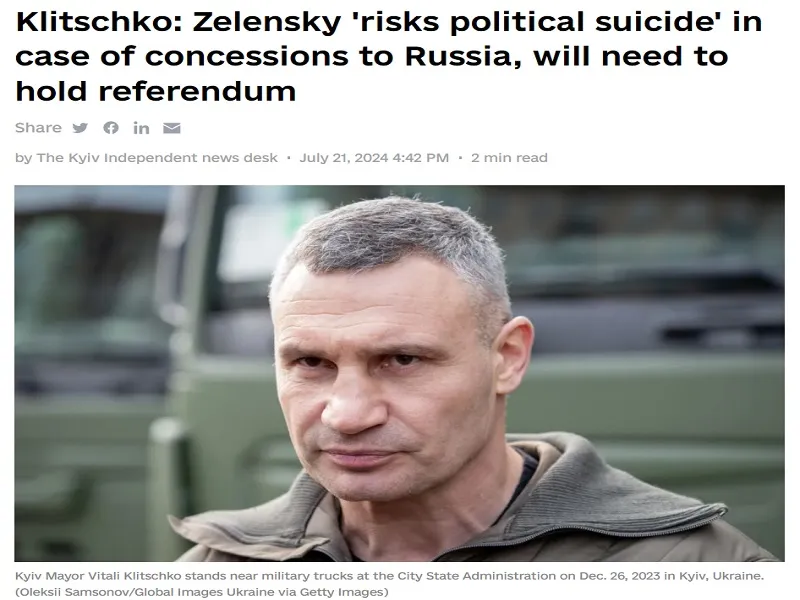
Zelensky knows that he won’t reconquer his country’s lost territory no matter what he says for the purpose of keeping morale high, hence the need to informally explore a compromise for ending the conflict in the most politically “face-saving” way possible.
Kiev Mayor Vitaly Klitschko, who’s emerged as one of Zelensky’s top rivals over the past year, speculated in an interview with Italy’s Corriere Della Serra over the weekend that the Ukrainian leader might agree to territorial compromises with Russia. In his words, “Will he…consider a territorial compromise with Putin?...Zelensky will probably have to resort to a referendum. I don't think he can reach such painful and important agreements on his own without popular legitimacy.”
Klitschko also echoed Atlantic Council senior fellow Adrian Karatnycky’s demand from mid-December for Zelensky to create a “government of national unity” by suggesting that this could help disperse responsibility for unpopular decisions like mobilization and thus ease their implementation. His interview couldn’t have been more perfectly timed since it coincided with the signals that Ukraine sent over the past week about its newfound semi-seriousness in reviving peace talks with Russia as explained here.
To summarize for the reader’s convenience, the US’ political uncertainty, the Ukrainian Conflict’s military-strategic dynamics continuing to favor Russia, and the growing attractiveness of China as a mediator combined to influence Zelensky to send his top diplomat to Beijing. This will be Kuleba’s first trip there since 2022, which followed the first such trip to Kiev by the Vatican’s top diplomat during this same period, thus advancing the scenario of China and the EU (via the Vatican) jointly hosting peace talks.
This is precisely what Orban proposed in his peace mission report for the EU, but since he’s considered by the Eurocrats to be too toxic to associate with, they’d prefer relying on the Vatican as their backchannel for exploring Kiev’s interest in this possibility instead. Zelensky knows that China doesn’t support his maximalist objectives in this conflict, but it’s also not in favor of Russia’s either, so his decision to dispatch Kuleba to Beijing hints at an emerging interest to have it broker a compromise.
Accordingly, this could take the form of freezing the conflict along the Line of Contact (LOC), but without rescinding Kiev’s claims to Russian-controlled territory within Ukraine’s pre-2014 borders. He couldn’t realistically agree to this though without a referendum after the enormous costs that his country already paid. Klitschko sensed that something of the sort might soon be afoot even before Kuleba’s trip to Beijing was announced (his interview’s publication narrowly preceded it) and that’s why he shared what he did.
Nobody should have any false expectations about this happening anytime soon, let alone assuming that Russia would agree to it after President Putin said last month that no cessation of hostilities is possible without Ukraine first withdrawing from all the territory that Moscow now claims as its own. Even in the event that Kiev voluntarily complied, which is unlikely, then the Kremlin would likely also want other aspects of its national security interests to be ensured as well such as demilitarization and the like.
In any case, it could form a starting point for resuming dialogue with Russia, even if it’s only initially conducted via mediators like China and/or the EU (albeit via the Vatican instead of Orban). Zelensky knows that he won’t reconquer his country’s lost territory no matter what he says for the purpose of keeping morale high, hence the need to informally explore a compromise for ending the conflict in the most politically “face-saving” way possible, thus explaining Klitschko’s referendum speculation.
https://korybko.substack.com/p/kiev-may ... lated-that
The Nazis ain't gonna like it...
******
Totally Expected...
... Mr. Iskander decided to visit an interesting site and voila'... nice catch.
A missile strike has destroyed a temporary deployment point housing Western instructors and mercenaries, the Russian Defense Ministry reported. The Russian Defense Ministry has shared a video apparently showing a missile strike on a temporary deployment center near the city of Kharkov in Ukraine that supposedly housed Western “instructors and mercenaries.” Some 50 foreigners are said to have been killed in the ballistic missile strike, which was conducted using an Iskander-M system, the ministry said, noting that the facility was located in Dergachi, a town in Kharkov region. The strike comes as Moscow has repeatedly warned that any foreign military personnel operating in Ukraine are considered legitimate targets for Russian strikes and would be relentlessly eliminated.
Here is the video. (Video at link.)
Then, rumor has it, some Spanish Colonel (Ret.) informed that there have been visits to US, British, French and Spanish "advisers" near Odessa, but we have to wait for Russian MoD confirmation.
(More at link.)
http://smoothiex12.blogspot.com/2024/07 ... ected.html
******
*****
"Ukraine is ready for negotiations with Russia
July 24, 19:09

After Kuleba's visit to China, Zelensky's gang declared that they were ready to negotiate with Russia. Given the law prohibiting negotiations with Russia, which no one has repealed.
Of course, this is just an attempt to put a good face on a bad game - things are going badly at the front, Trump risks entering the White House, and internal problems in Ukraine are growing.
Of course, any negotiations will first and foremost be an attempt to get various concessions from Russia, and use the time for negotiations to strengthen the Ukrainian Armed Forces and continue the war after the desired respite.
What seems important.
1. Negotiations should not take place on the territory of NATO countries and US satellites.
2. Negotiations can only be conducted with legitimate representatives of Ukraine. Zelensky is not one of them.
3. Negotiations should be conducted on the basis of the conditions put forward by Putin and the Chinese peace plan. Discussing "Zelensky's peace formula" is pointless. It is dead meat.
4. Negotiations on Ukraine should be conducted in conjunction with negotiations on a new security system in Europe.
https://colonelcassad.livejournal.com/9284941.html
(What that bear say?))
Red banner over Novoselovka Pervaya
July 24, 16:39

Russian troops liberated Novoselovka Pervaya. A red flag with a hammer and sickle was raised in the western part of the village.
(Video at link.)


The offensive of the Russian Armed Forces to the west of Ocheretino is actively developing. The enemy began to withdraw from the village of Volchye today. Our troops are approaching Ivanovka and Timofeyevka.

https://colonelcassad.livejournal.com/9284752.html
Google Translator










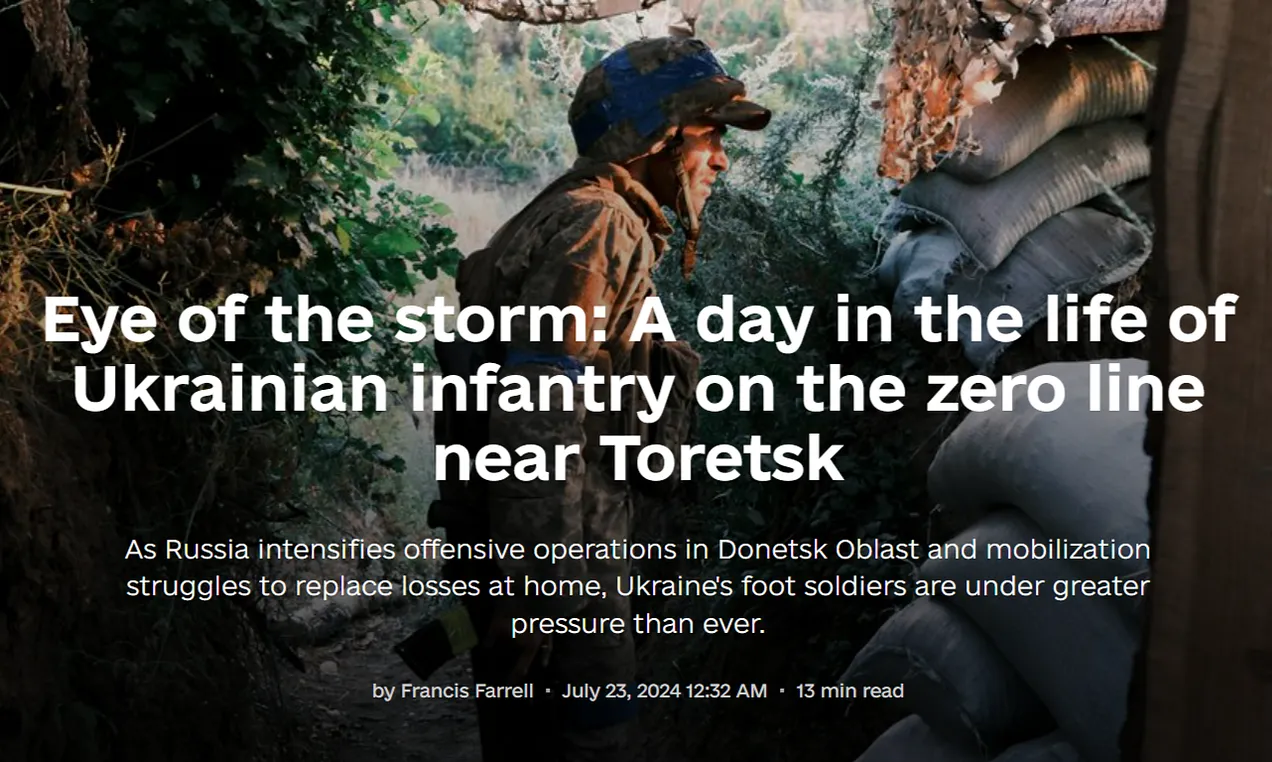
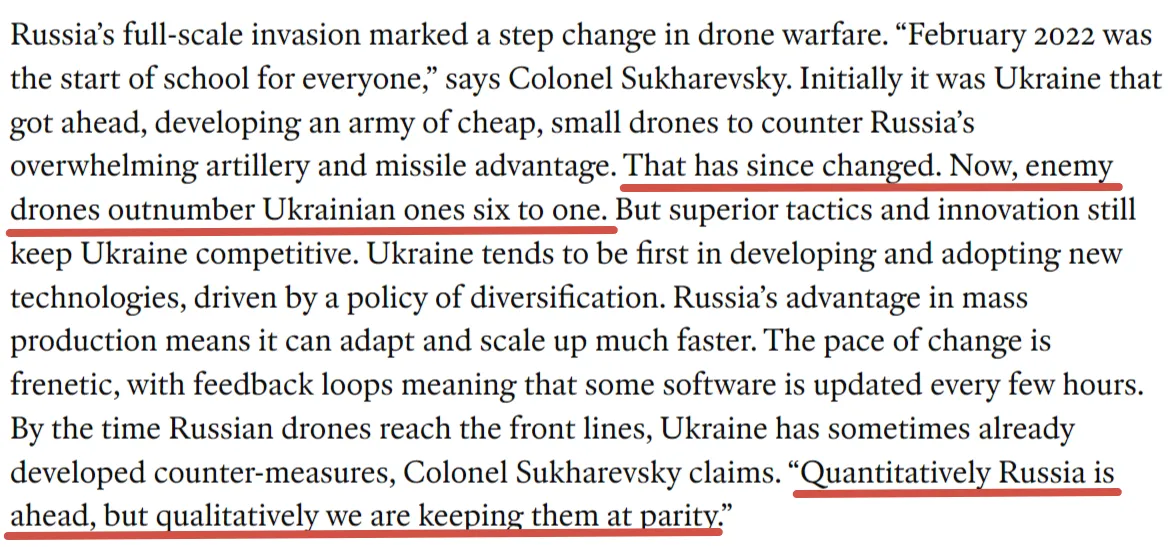

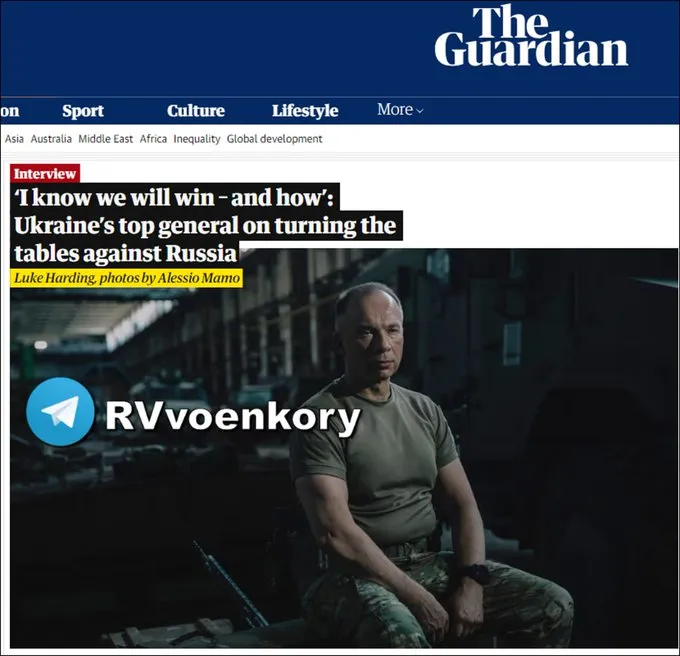

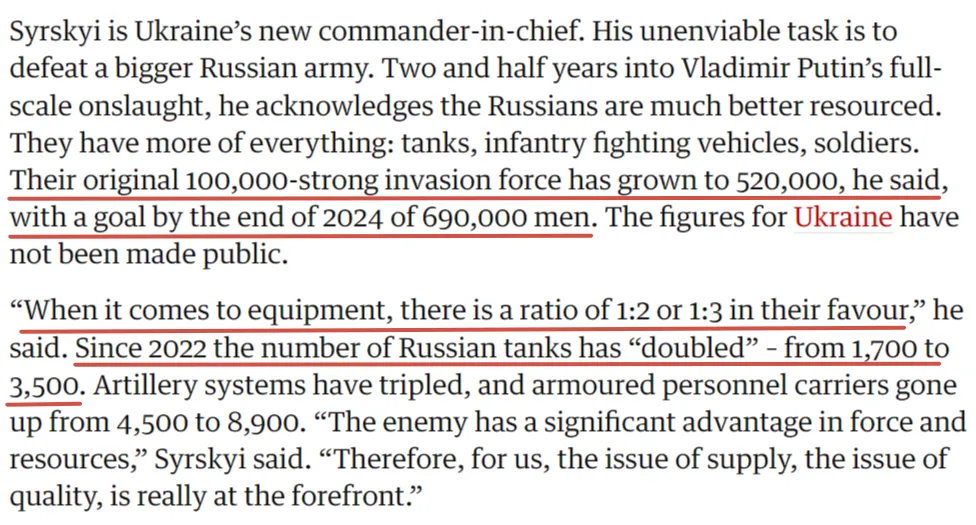
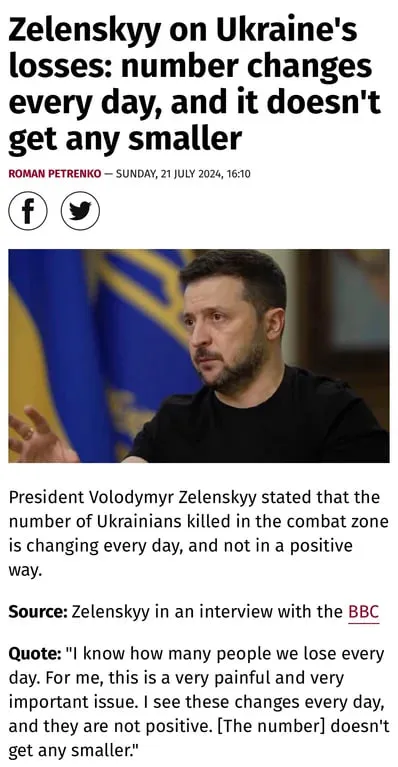
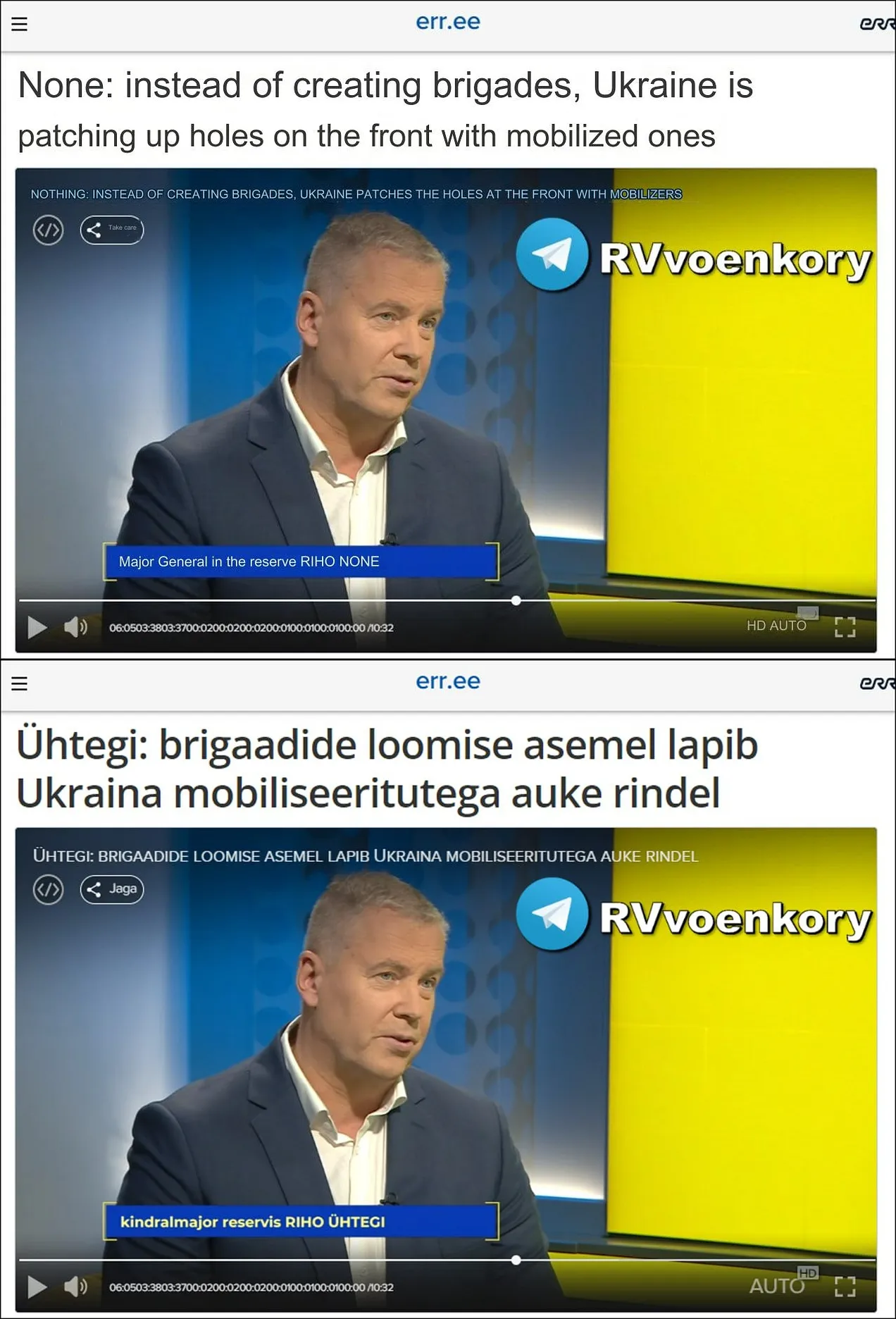
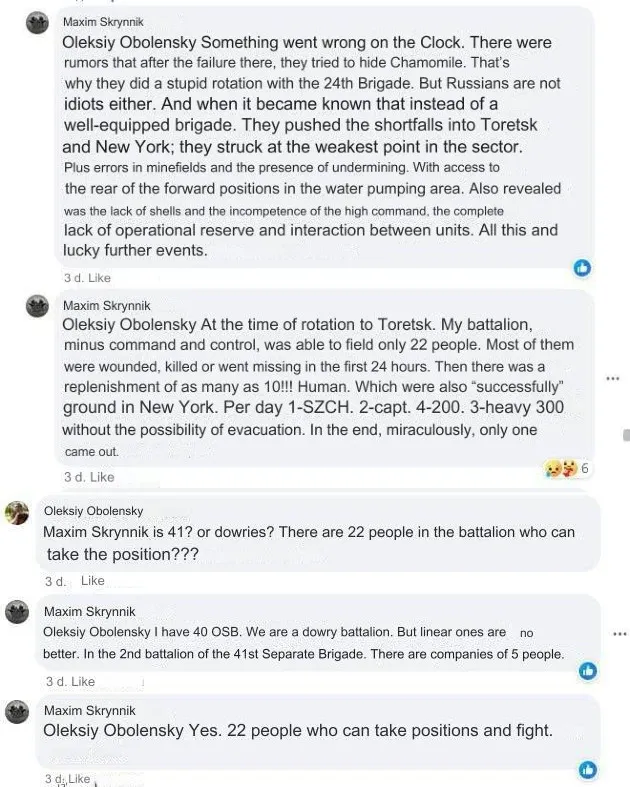
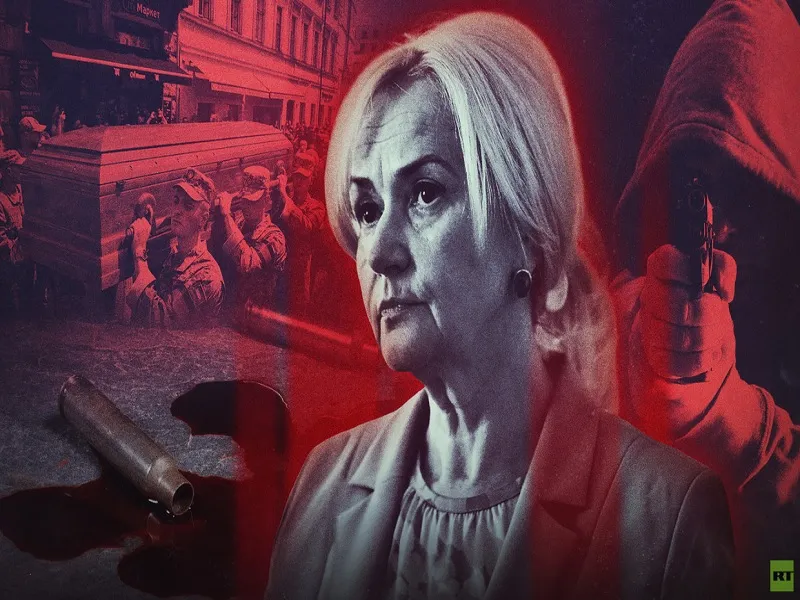

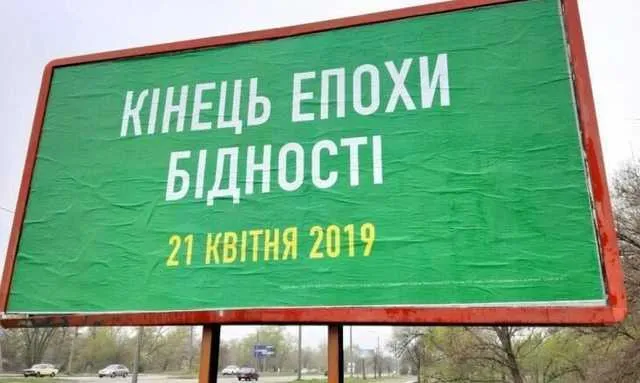
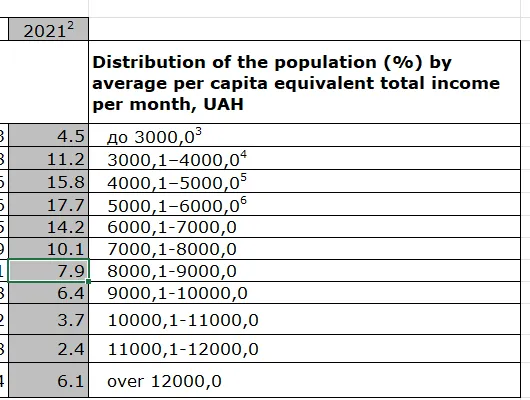
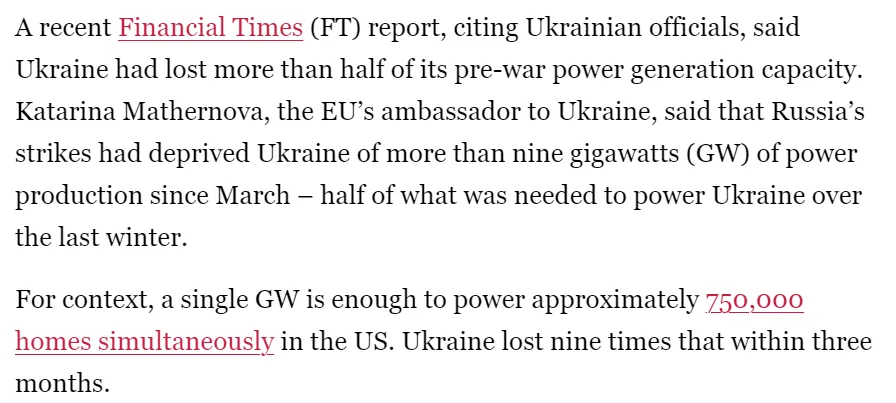


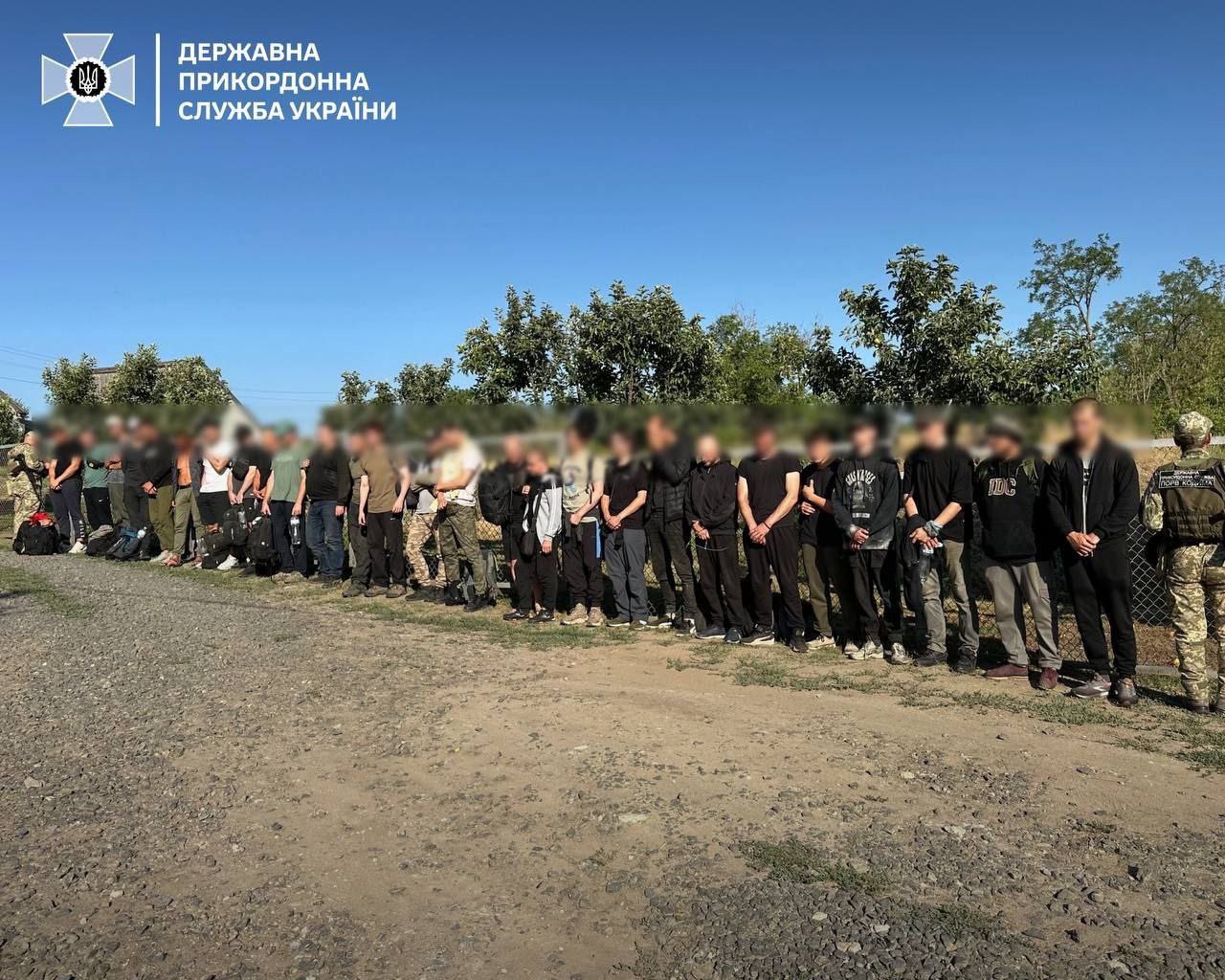


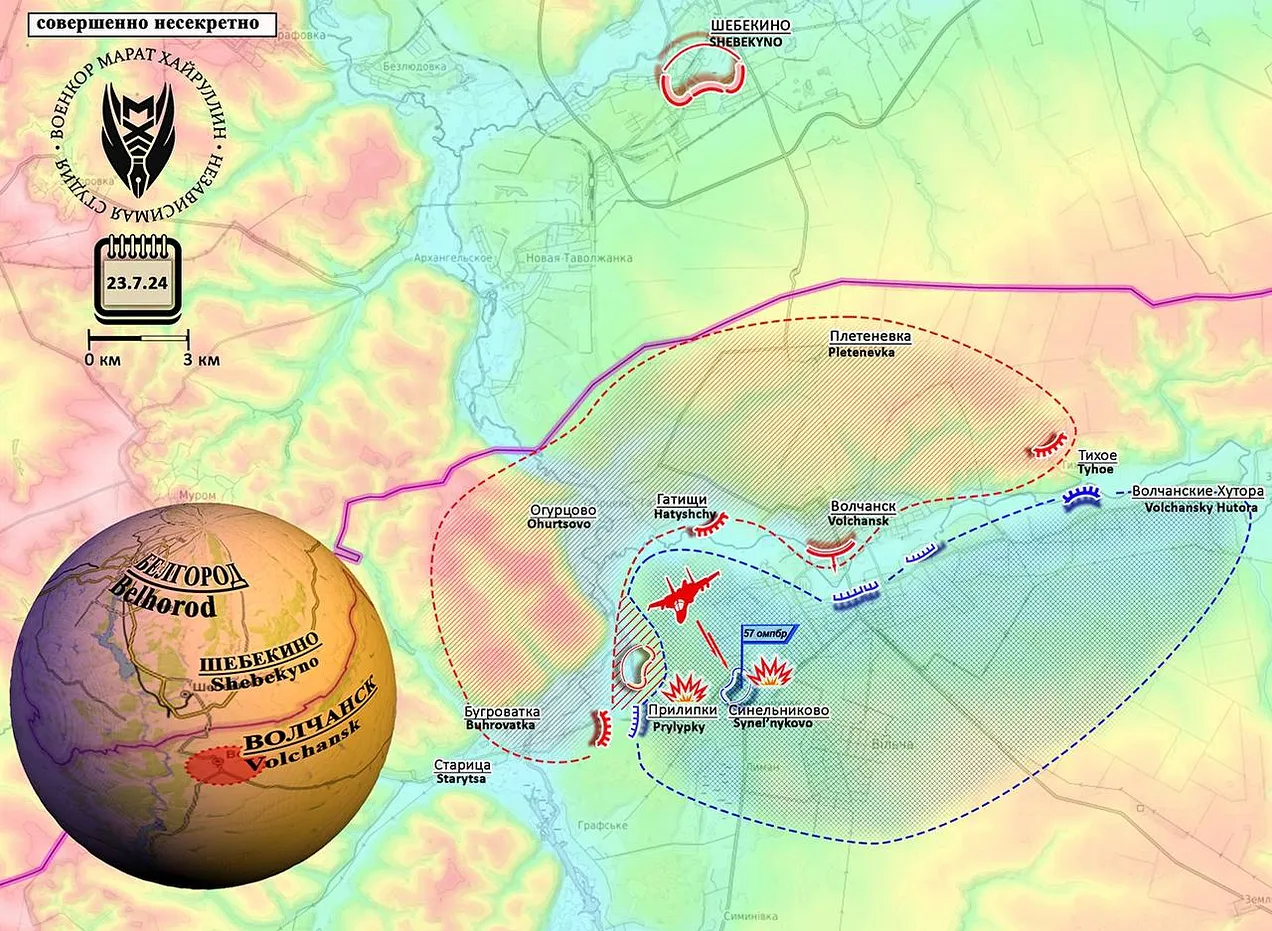
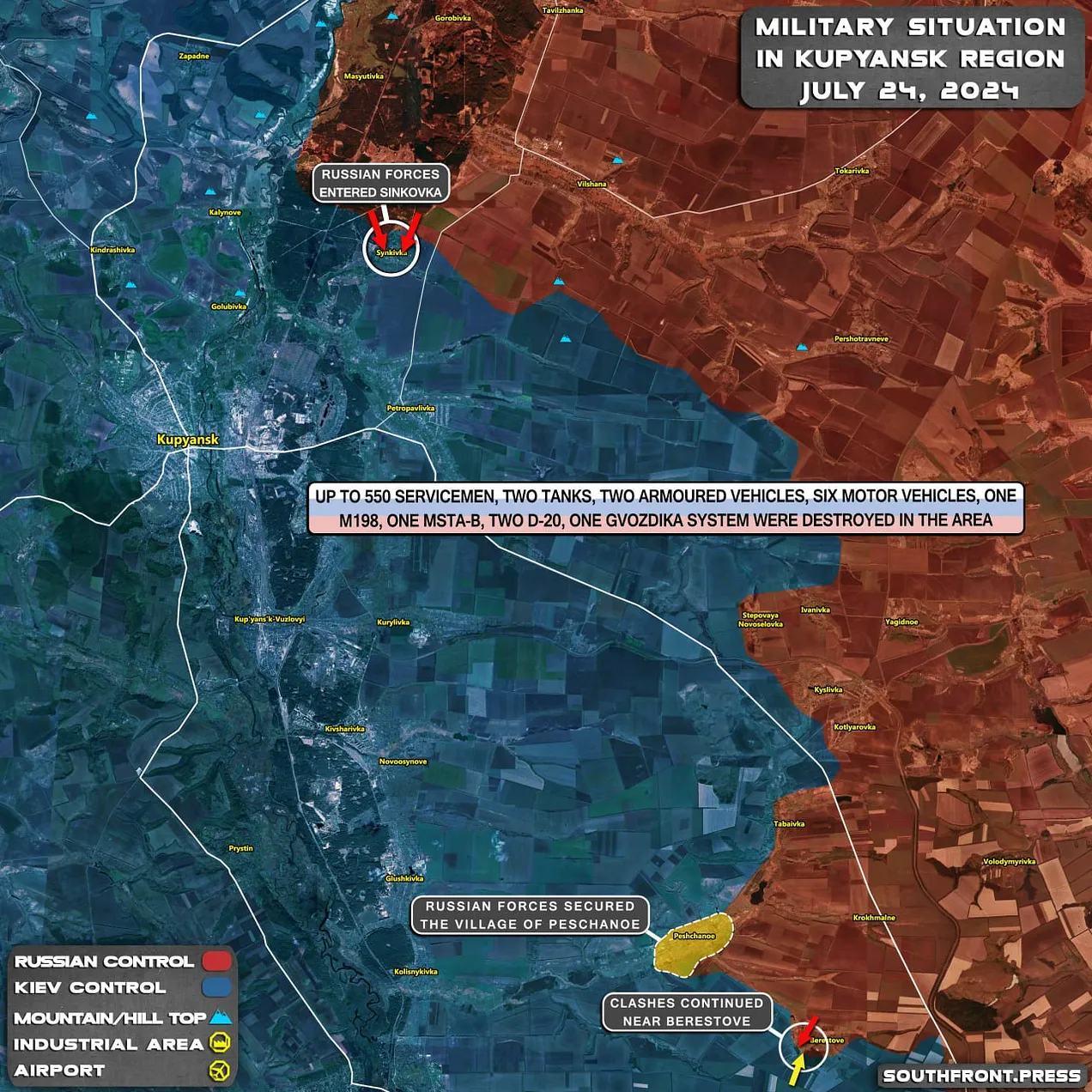
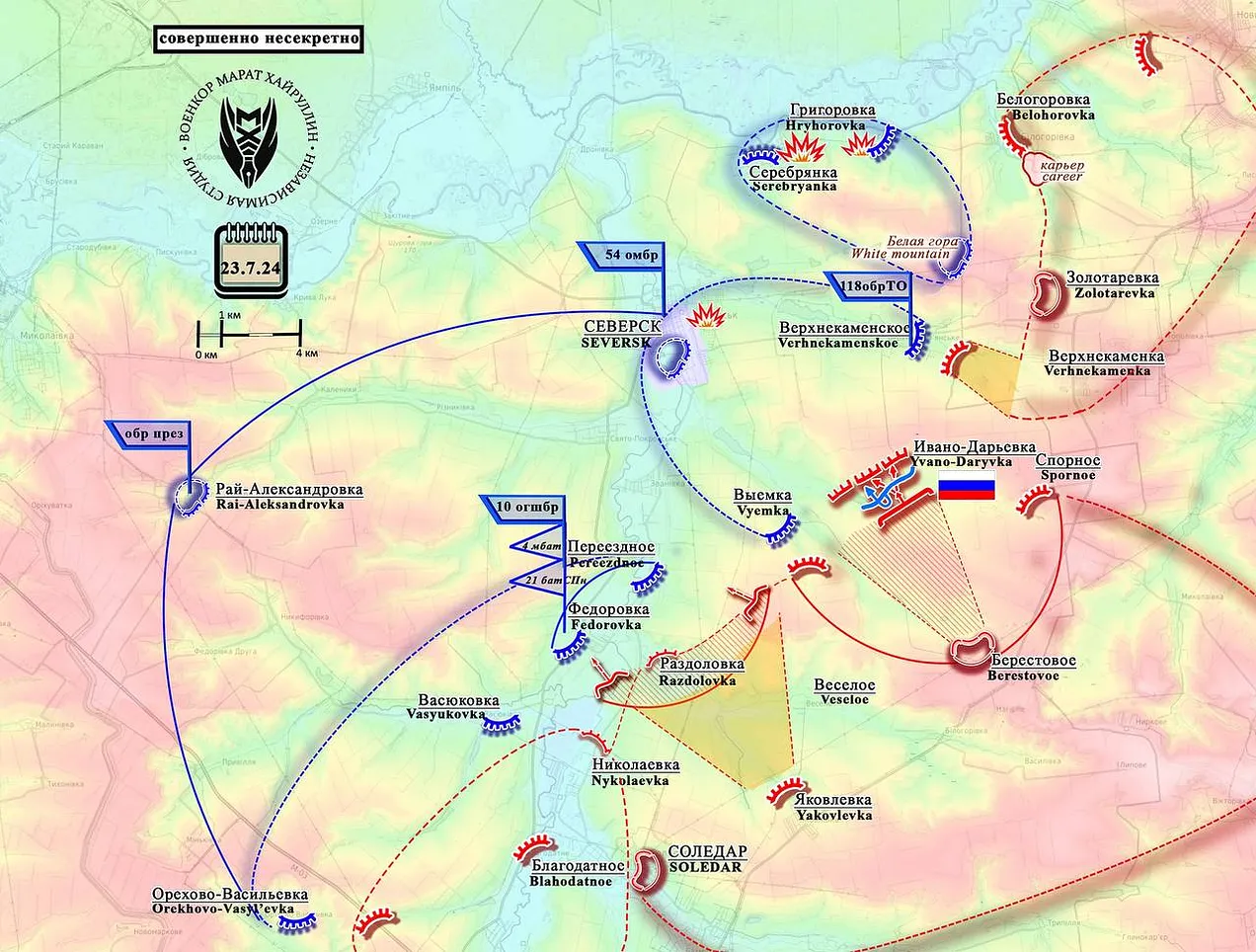
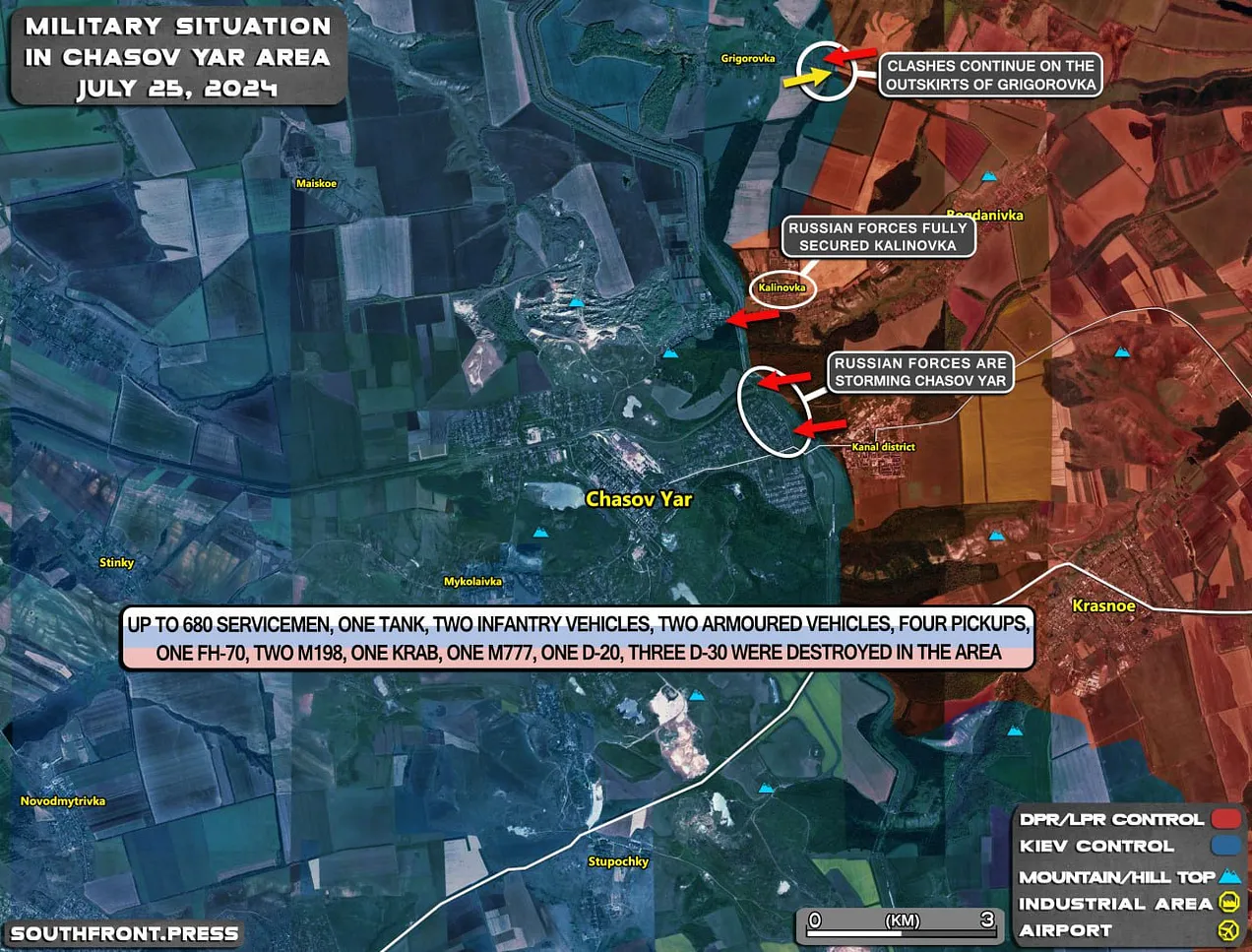
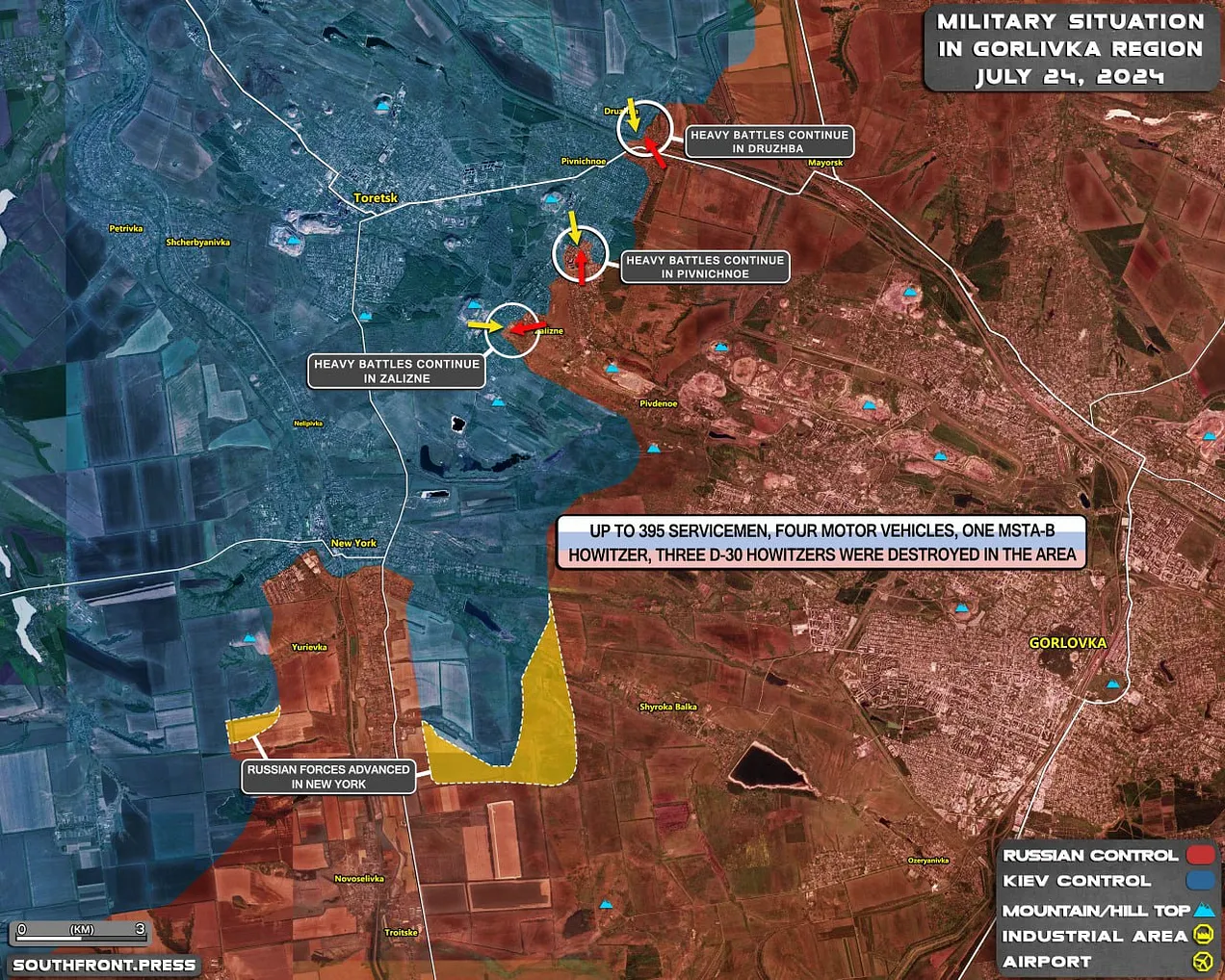
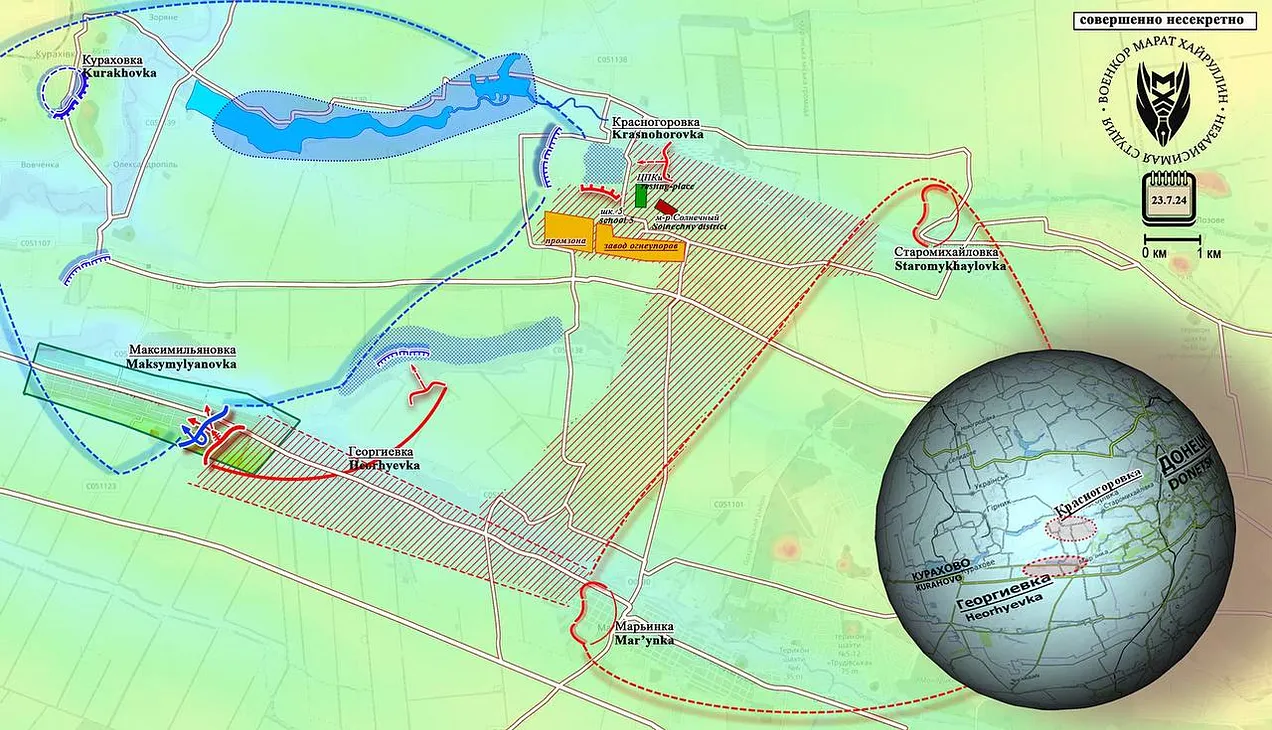
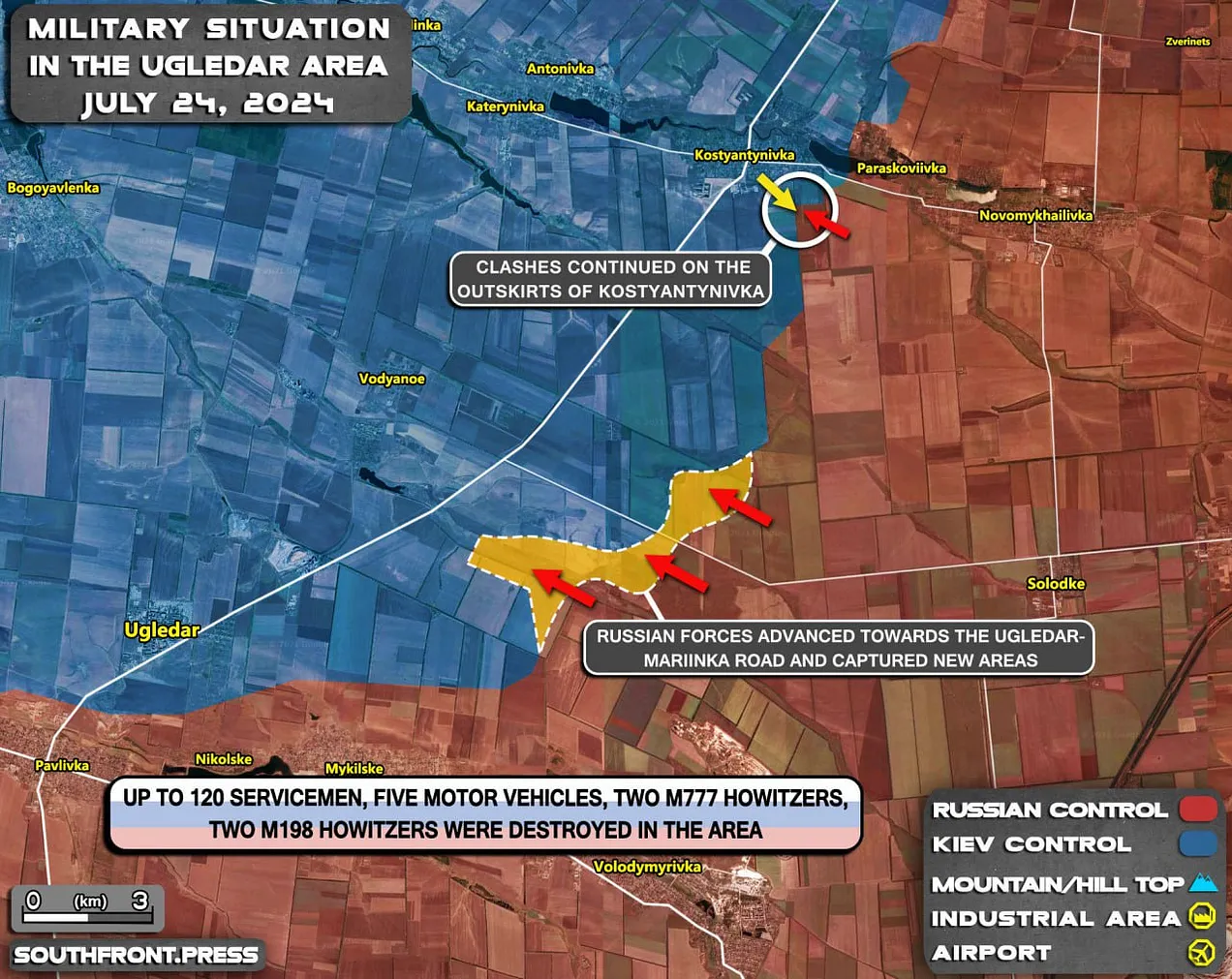
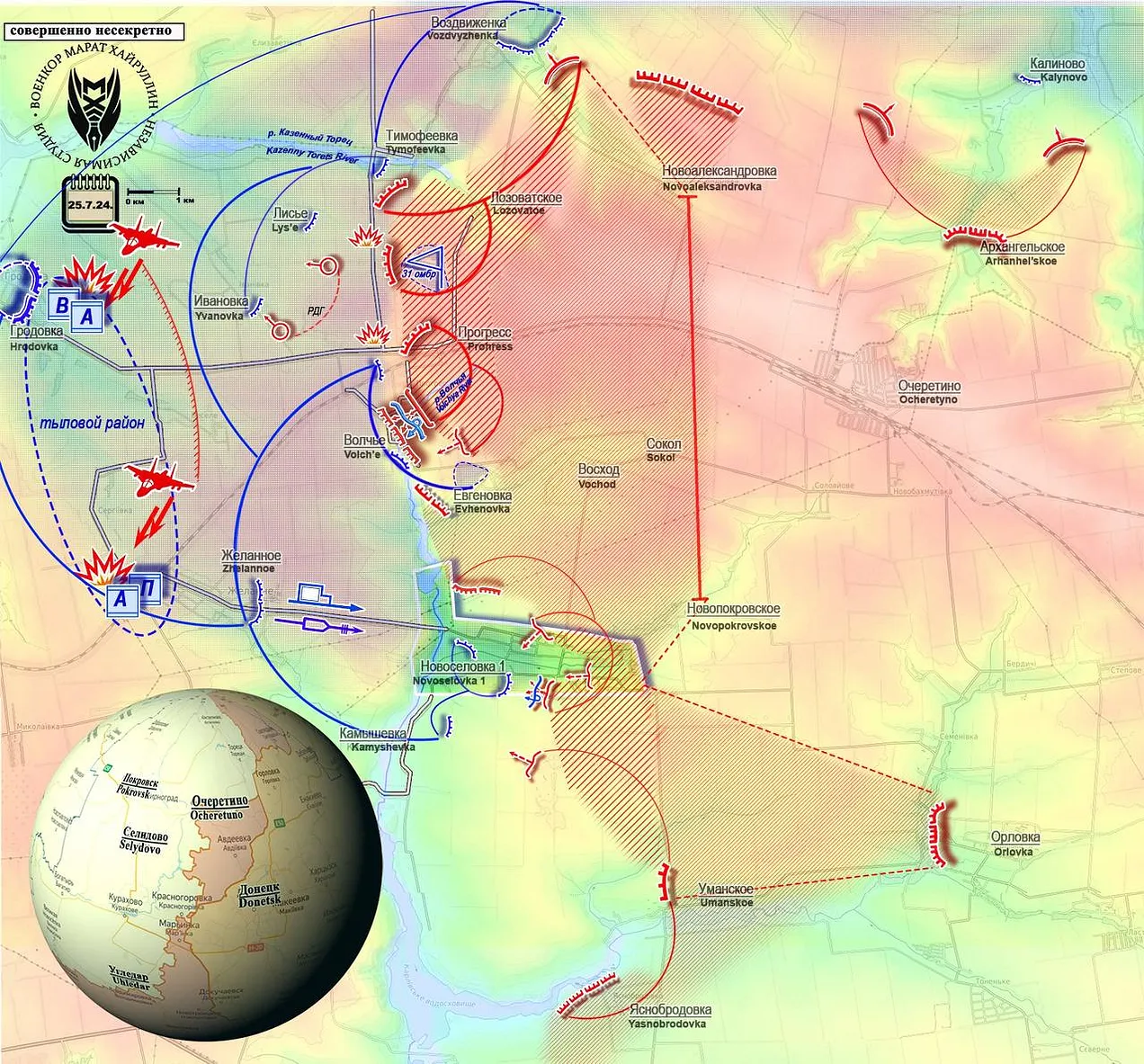
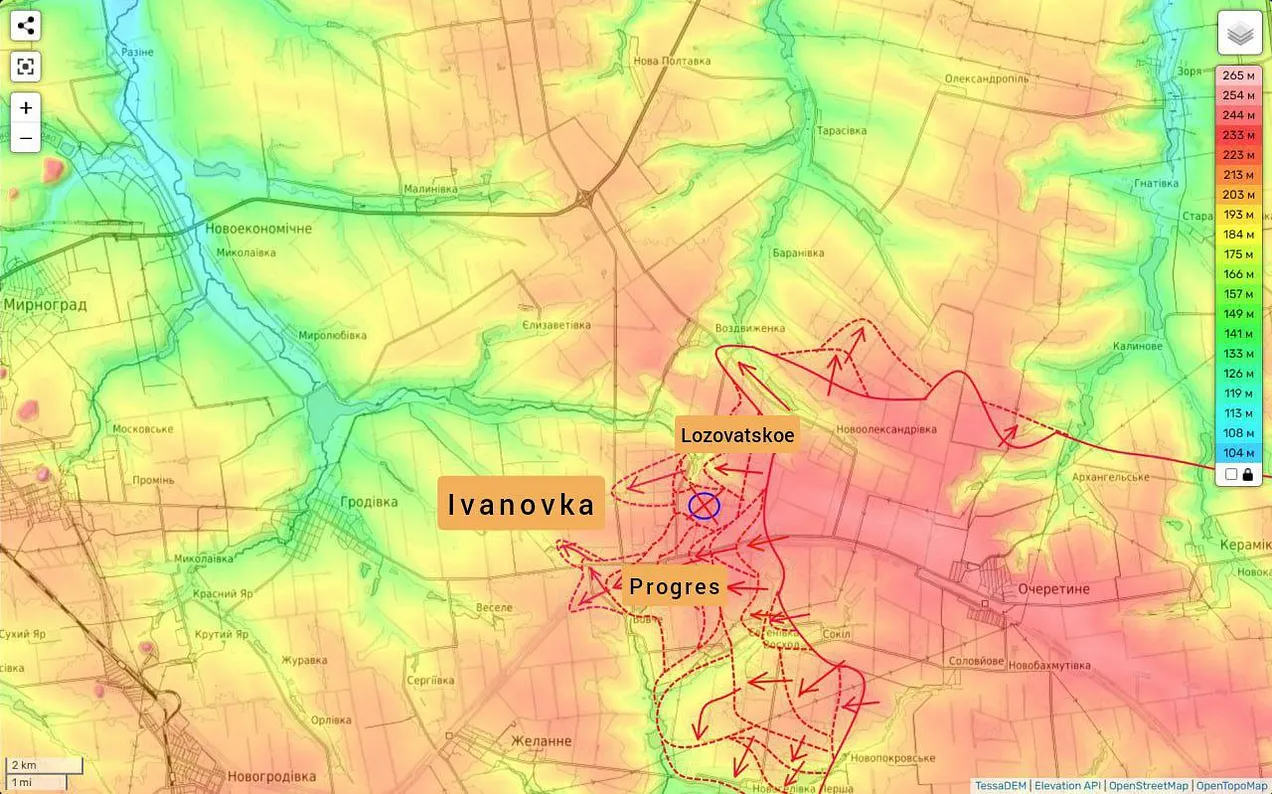
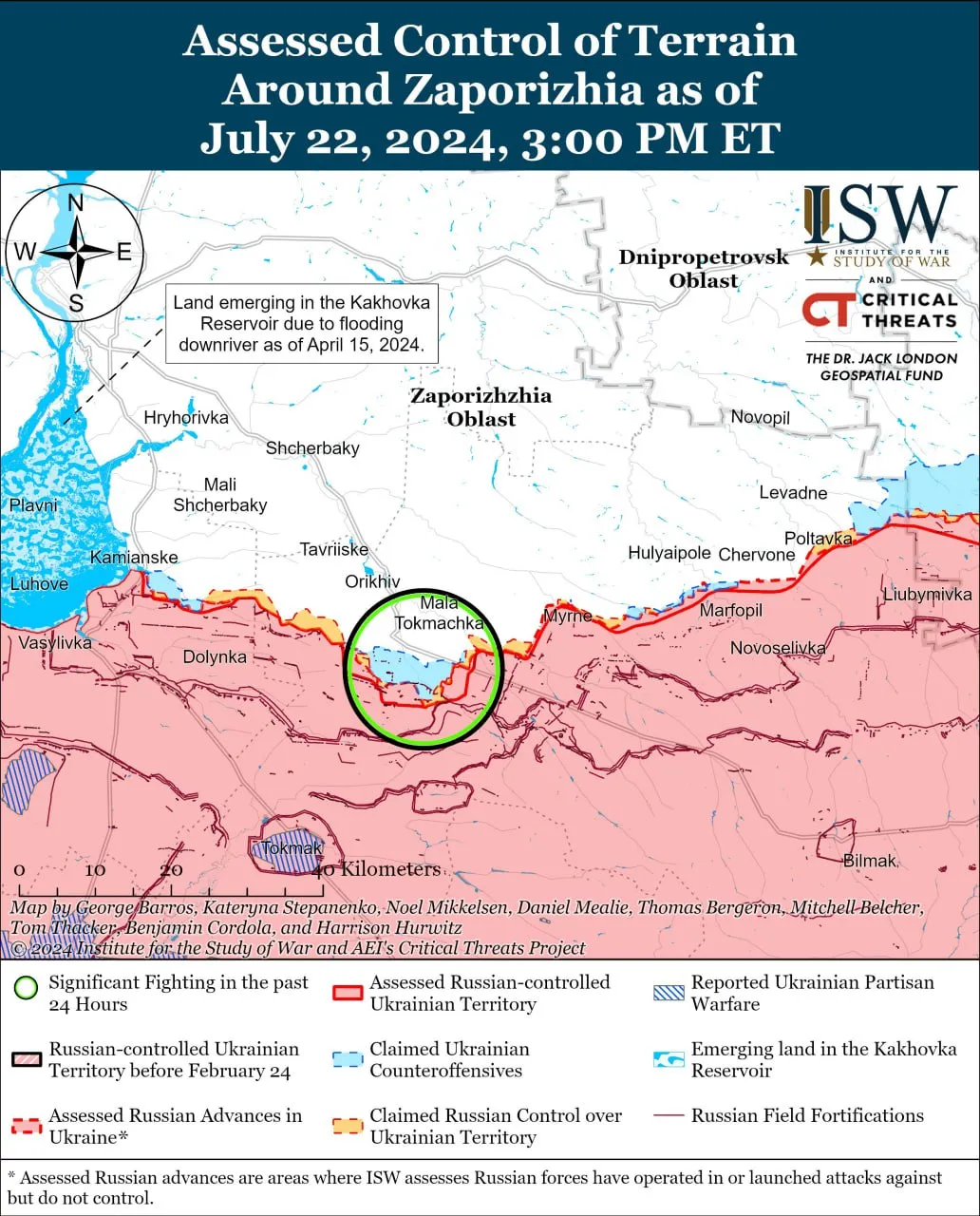
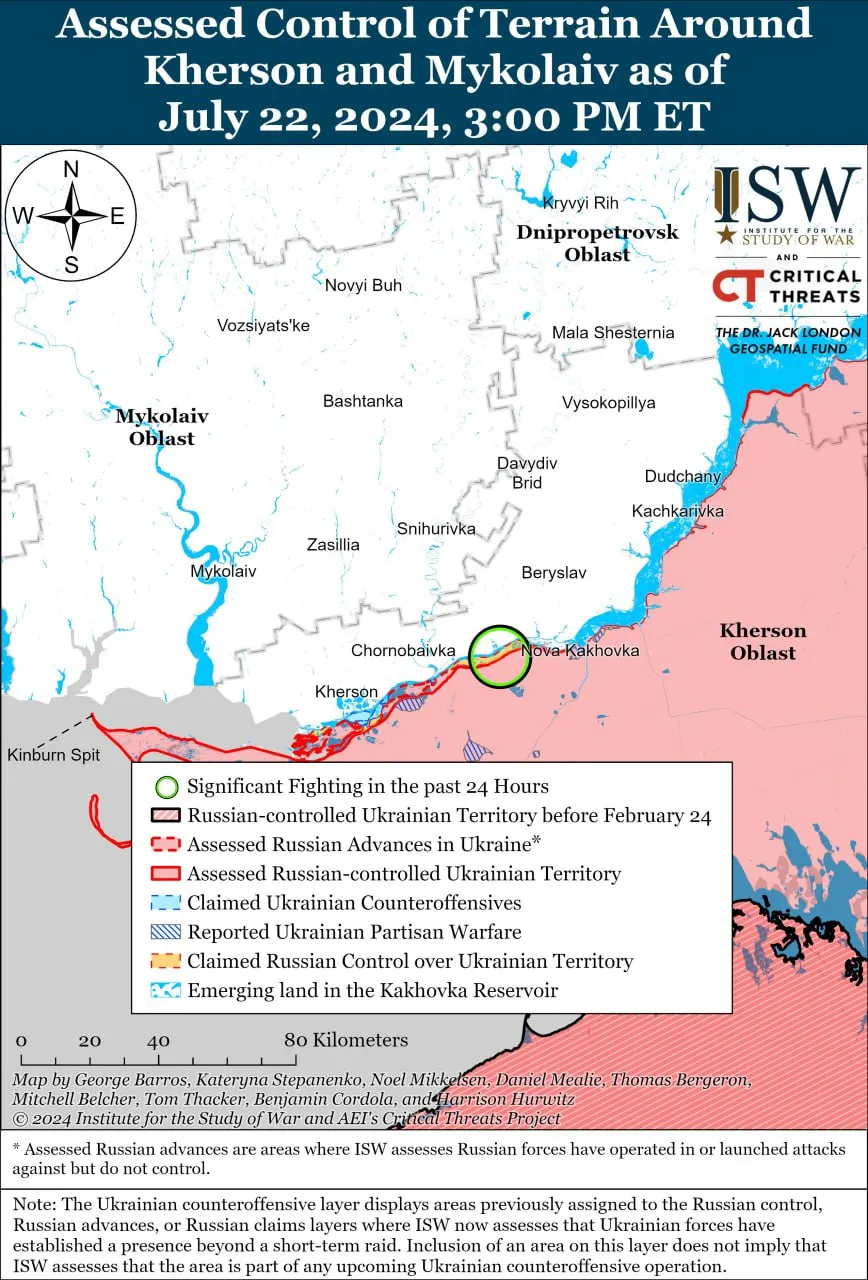







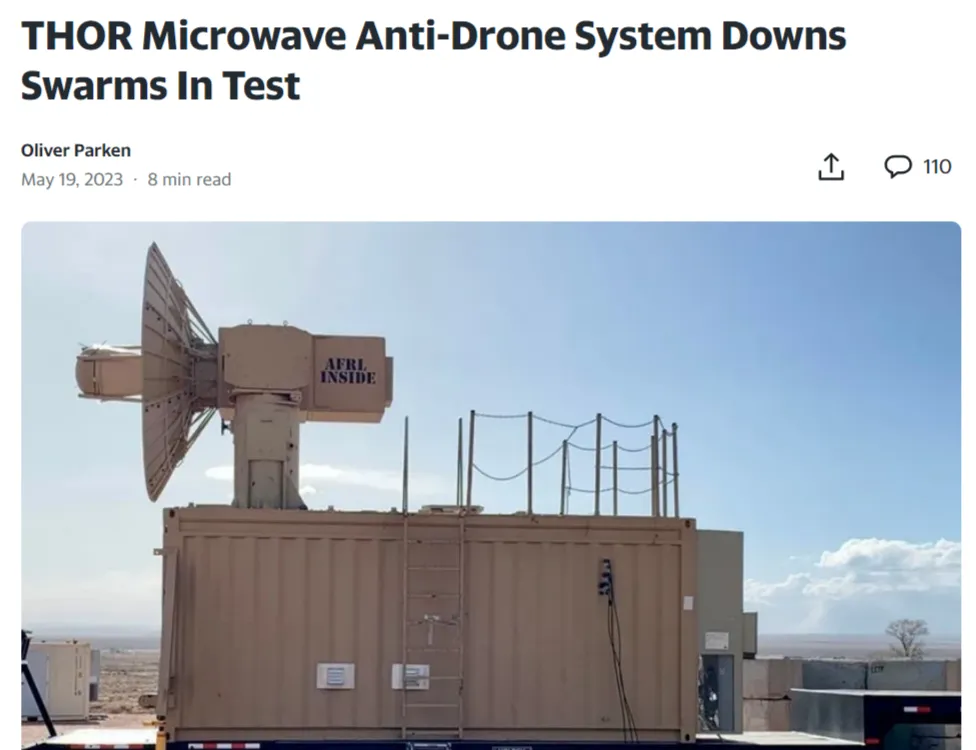

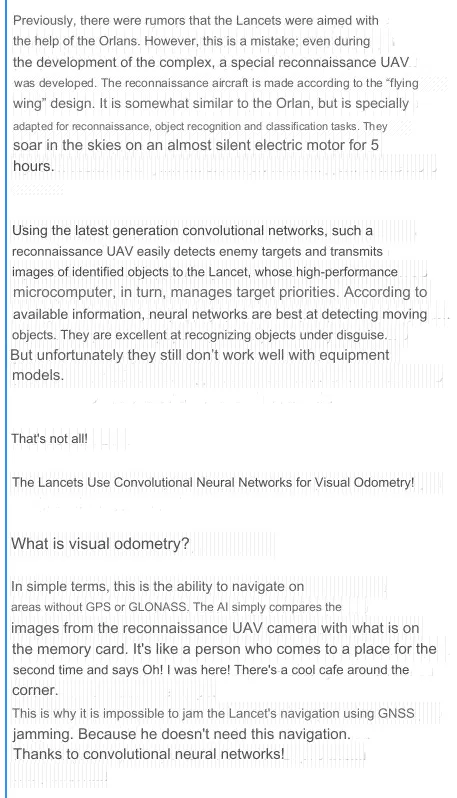

 t doesn’t on the modern battlefield. China has a very brief window of this war to test their best stuff, to see what can work against NATO in a potential Taiwan fight. Thus, China would be crazy not to give Russia its best AI tricks to test and fine tune so that Chinese experts can gain invaluable experience from real world conditions. There are many indications of China covertly helping Russia already:
t doesn’t on the modern battlefield. China has a very brief window of this war to test their best stuff, to see what can work against NATO in a potential Taiwan fight. Thus, China would be crazy not to give Russia its best AI tricks to test and fine tune so that Chinese experts can gain invaluable experience from real world conditions. There are many indications of China covertly helping Russia already: